Every day, underground marketplaces on messaging app Telegram catering to Singapore customers are abuzz with wildlife being hawked illegally by sellers using pseudonyms.
The offerings range from exotic animals legal elsewhere, such as geckos and ball pythons, to heavily trafficked wildlife, such as the Indian star tortoises and even pangolins, The Straits Times found.
Environmental and wildlife crime has become one of the world’s biggest and most profitable crime sectors, and the growing trade is pushing many species to the brink of extinction, warned Interpol on Nov 6.
Singapore keeps a tight rein on the sale and licensing of pets because of the threat that the trade can pose to the health and safety of animals, humans and ecosystems in the densely packed city state.
This involves banning the keeping of most animals not native to Singapore – hedgehogs, iguanas and tortoises among them – even if they are permitted in other countries.
Yet, more than a year after raids by the National Parks Board (NParks), which oversees Singapore’s biodiversity conservation, on the homes of eight people who had advertised wildlife species for sale on Telegram, the illicit pet trade continues to thrive.
The illegal pet trade appears to be the most rife on messaging app Telegram among the online platforms used here. This is because its chat groups are the most challenging for the police to monitor, according to Traffic, a global anti-wildlife trafficking non-governmental organisation based in Britain.

Traffic senior programme officer Serene Chng said: “What makes Telegram popular is also what makes it difficult to police – large group chats of up to 200,000 members and a focus on secure and private messaging that has seen it pioneer end-to-end encryption, secret chats and self-destructing messages.”
“For the authorities looking to curb or investigate illegal activities, it’s akin to looking for a secret, sometimes vanishing needle in a haystack.”
ILLEGAL TRADE
Checks by ST uncovered six groups on the messaging platform illegally peddling a total of more than 35 species as pets. The largest group had more than 16,000 members.
On July 4, one seller offered to sell the world’s most trafficked wild animal – a critically endangered Sunda pangolin – for $2,000 when this reporter posed as an interested buyer on a Telegram group.
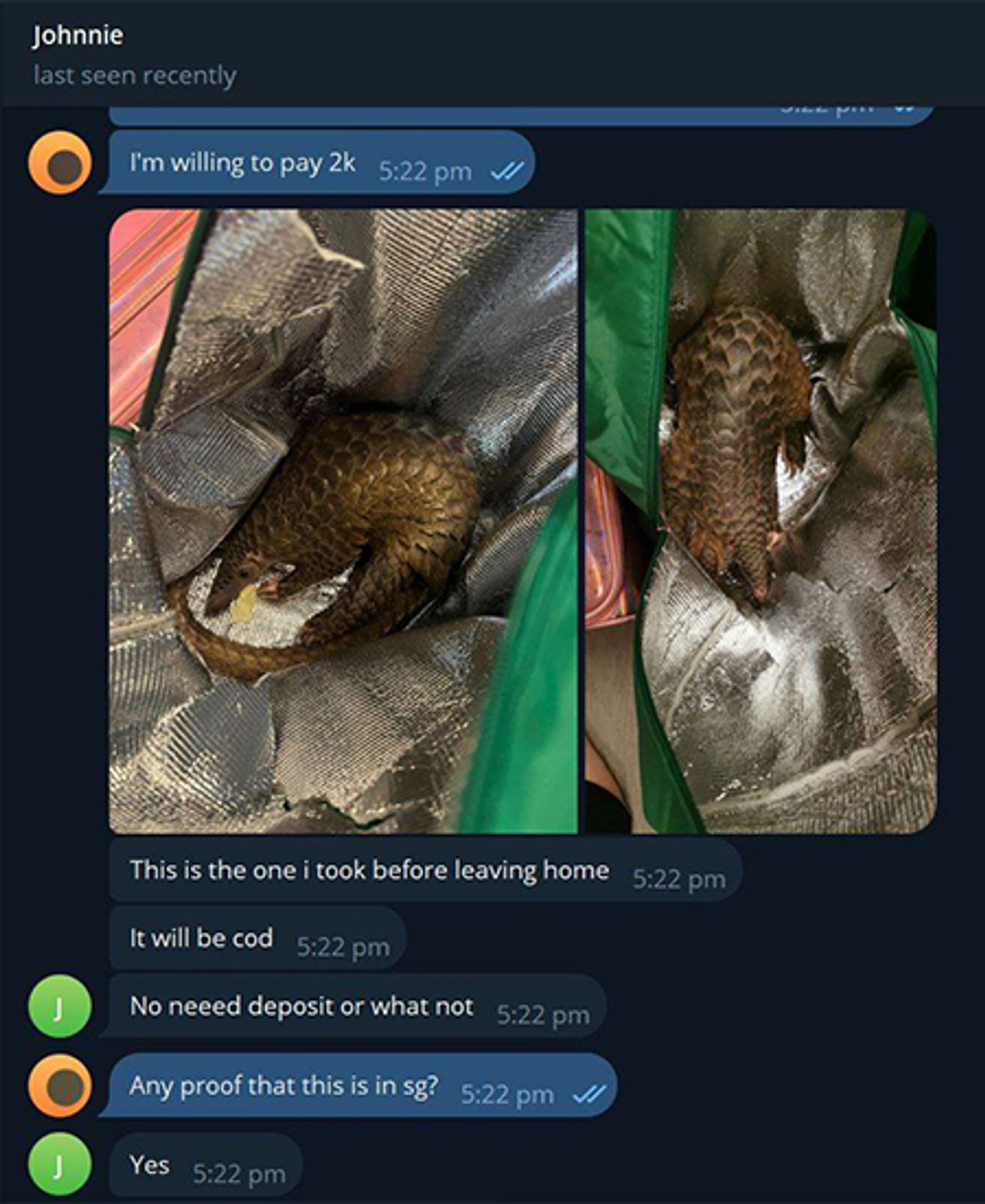
Cash on delivery, or “COD”, guarantees that the buyer is not scammed, assured the seller, who went by the moniker “Johnnie”. The animal could be picked up at a Jurong West HDB estate.
The animal was kept in a Grabfood bag used for deliveries. Johnnie said it had been smuggled from Malaysia.
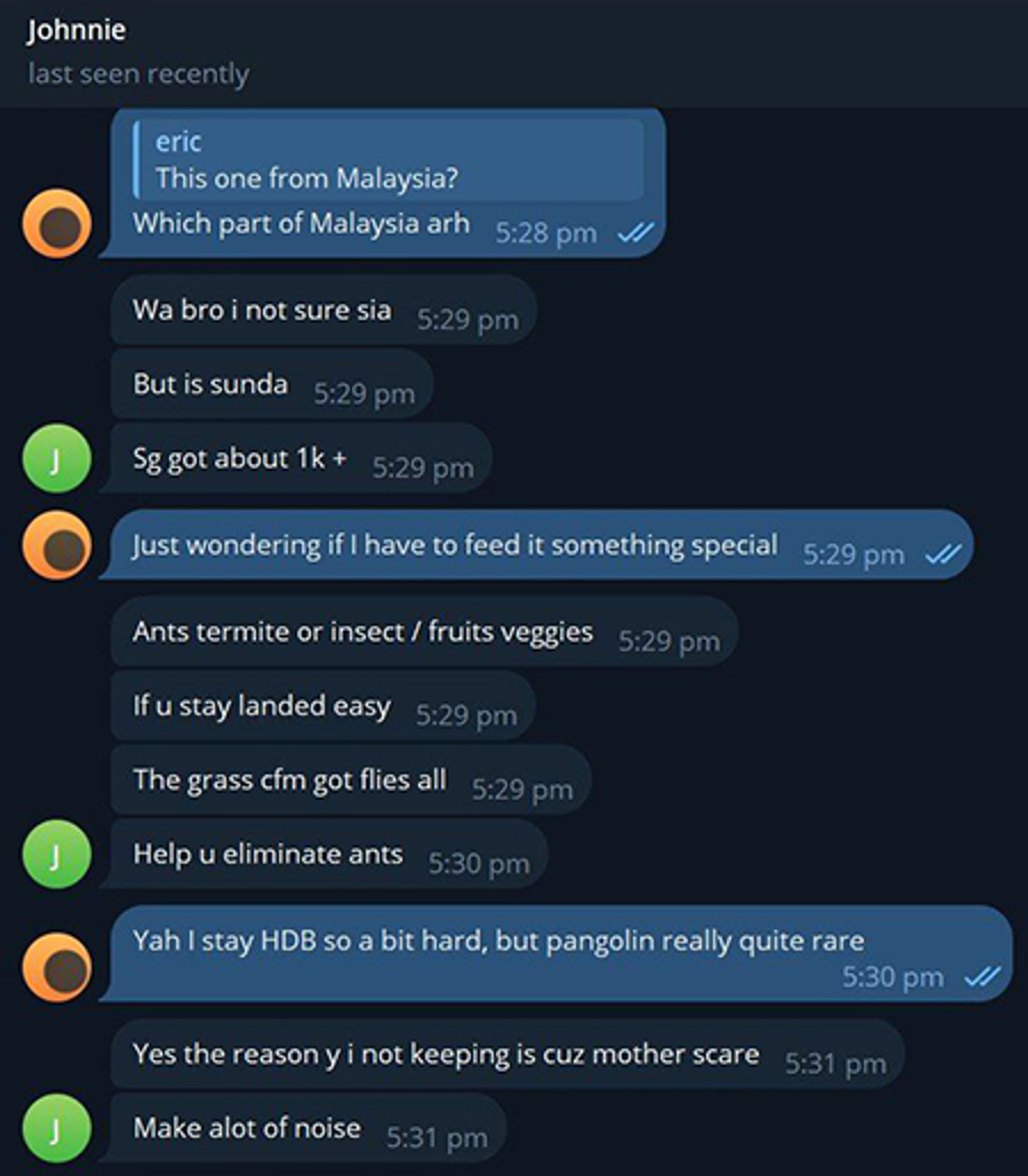
During negotiations, he said the mammal’s scales could be resold, and he was aware that only about 1,040 of Sunda pangolins are left in Singapore.
Within less than two hours, Johnnie claimed to have sold the pangolin to another buyer for $1,600 as he was “in a rush”.
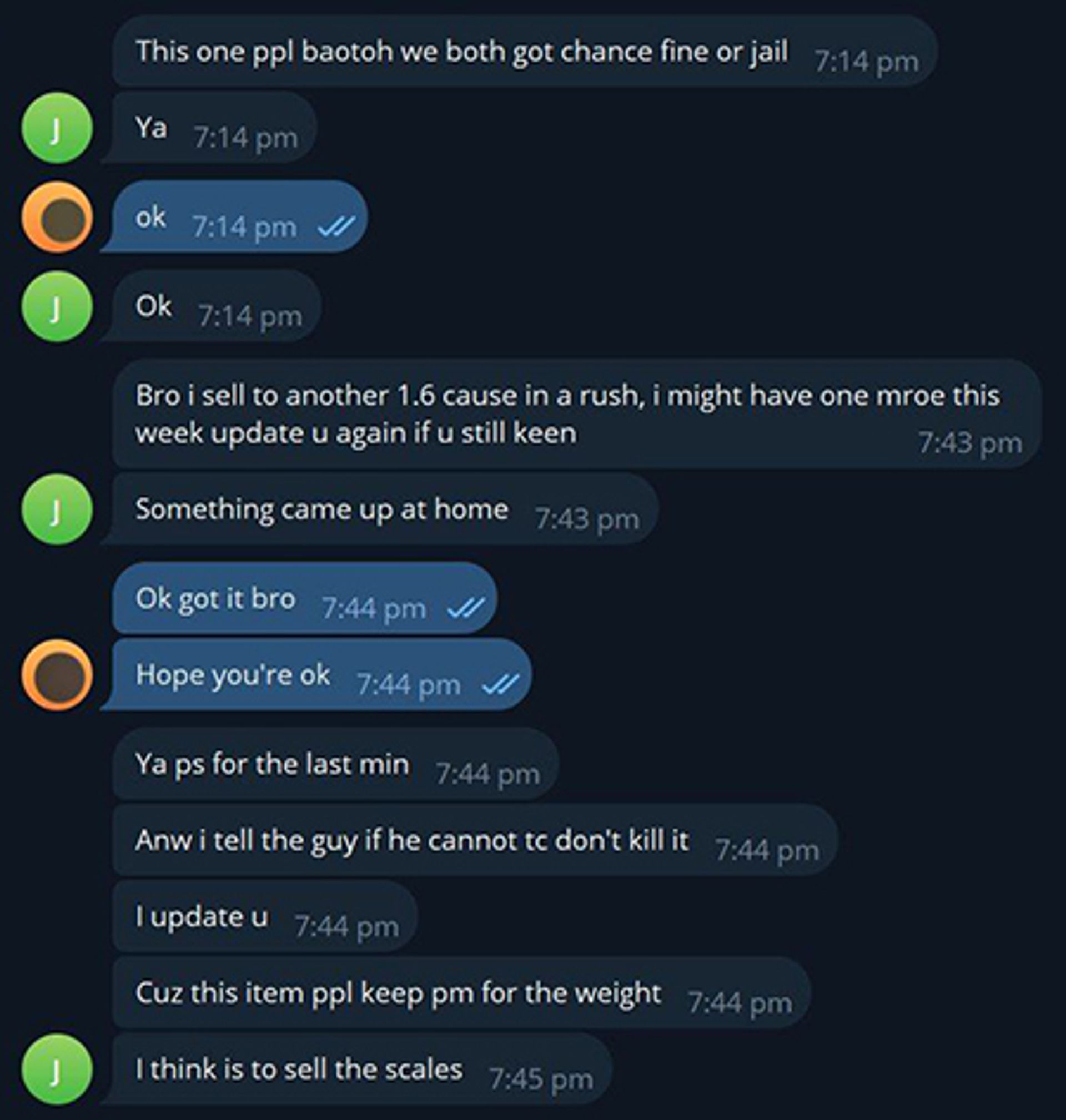
The pangolin’s unfortunate crown as the world’s most trafficked animal stems from the consumption of its body parts, which are prized in Asia’s luxury meat and traditional medicine markets.
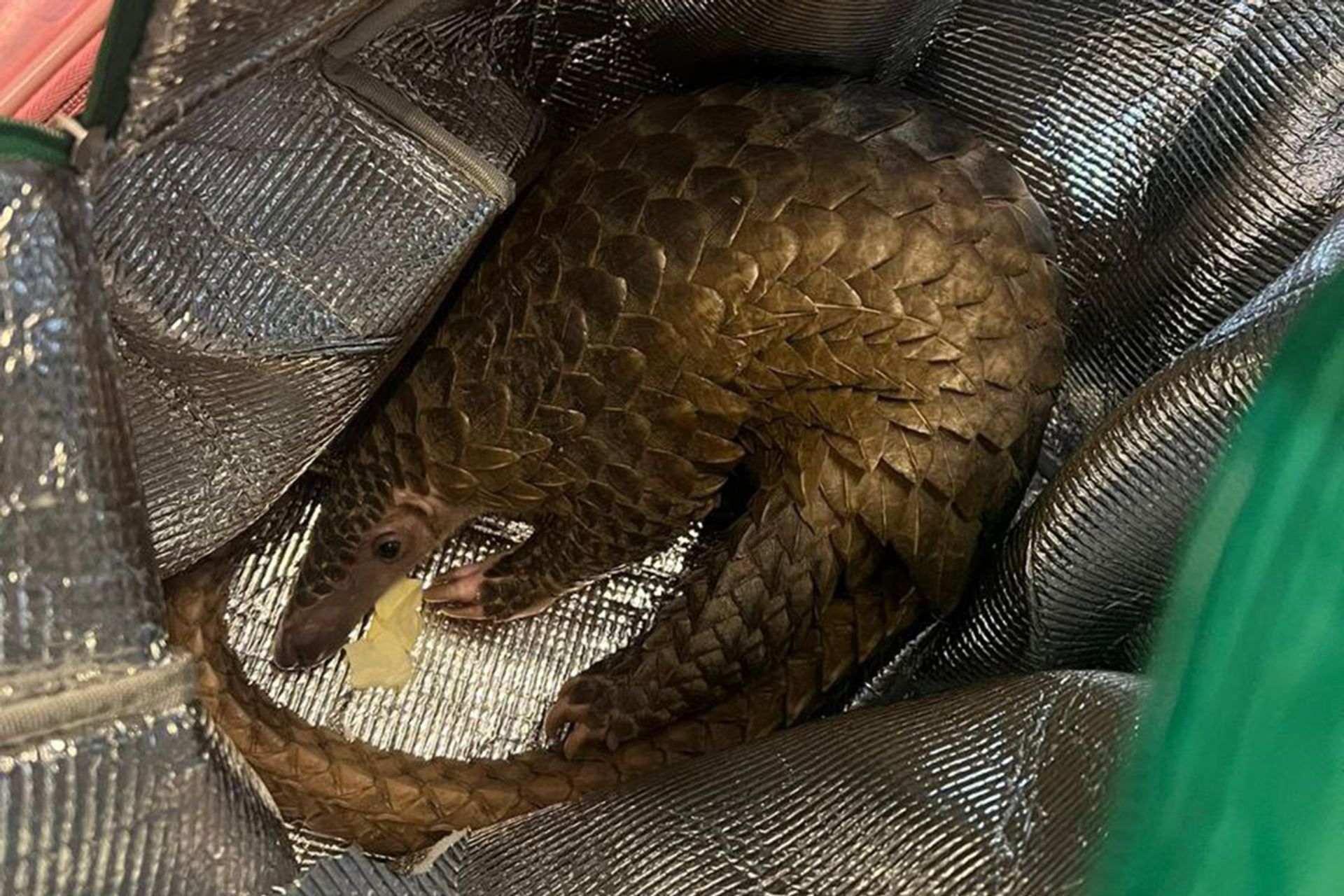
As the creature is shy and nocturnal, it is difficult to estimate the size of pangolin populations, but conservationists are certain that these are declining, based on the number of confiscations.
In 2019 alone, the Government seized 37.5 tonnes of pangolin scales here, estimated to have come from nearly 40,000 pangolins.
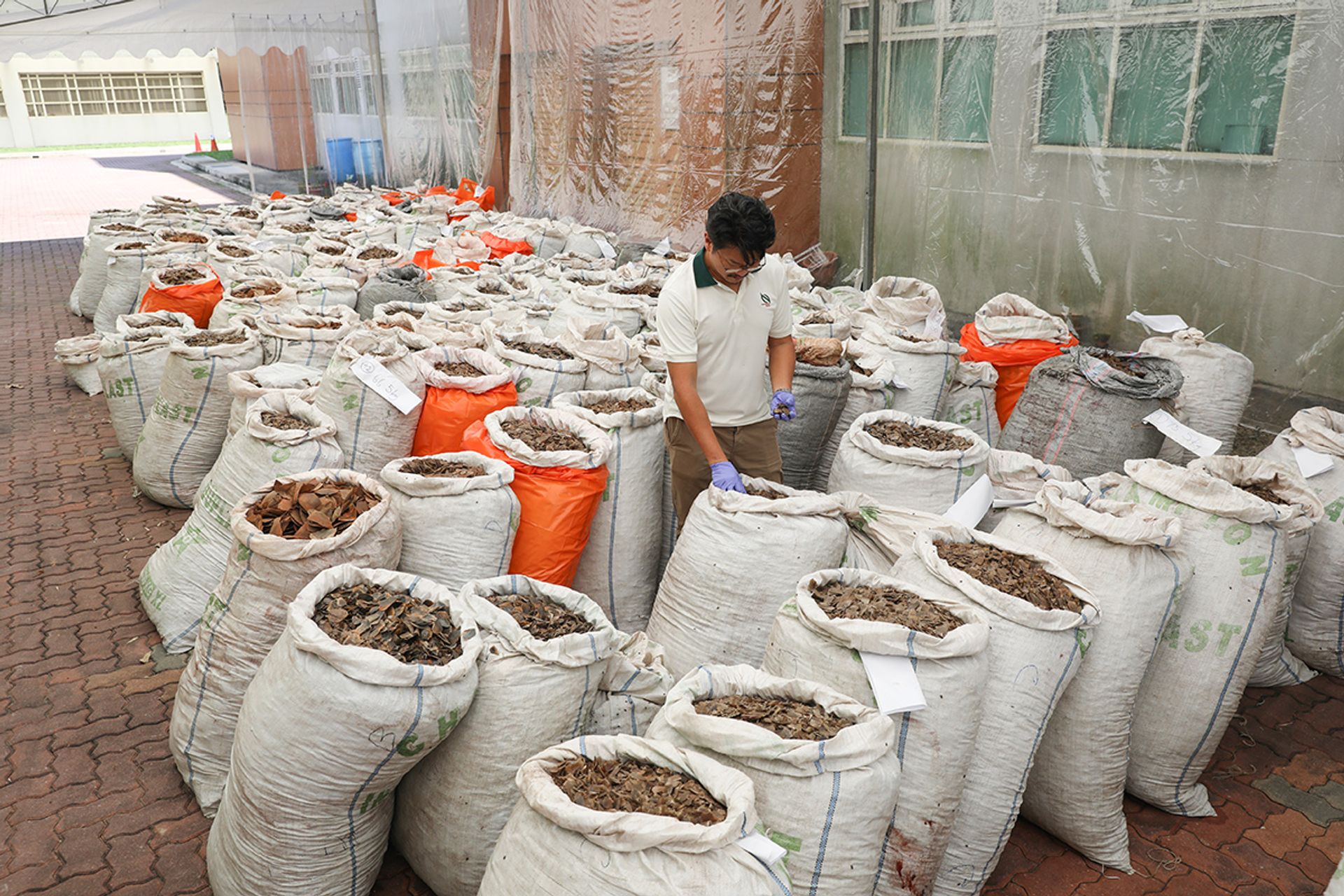
It is very likely that the pangolin sold on Telegram had been poached and not captive-bred, said Traffic’s Ms Chng, adding that even the most experienced wildlife vets find it challenging to breed and keep them alive.
As pangolins are also bought for their meat, it is not always clear if they are bought as pets or for consumption, she said.
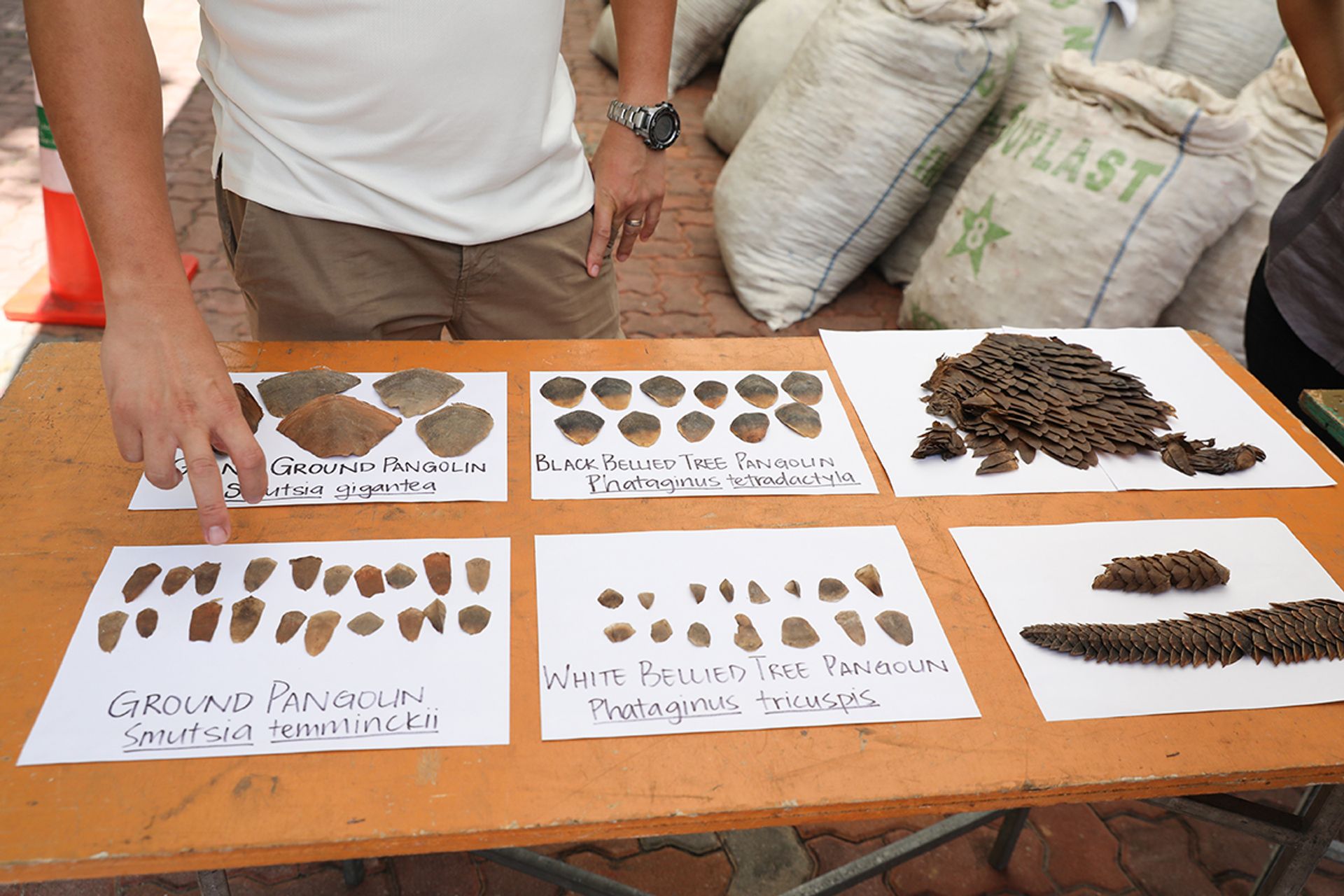
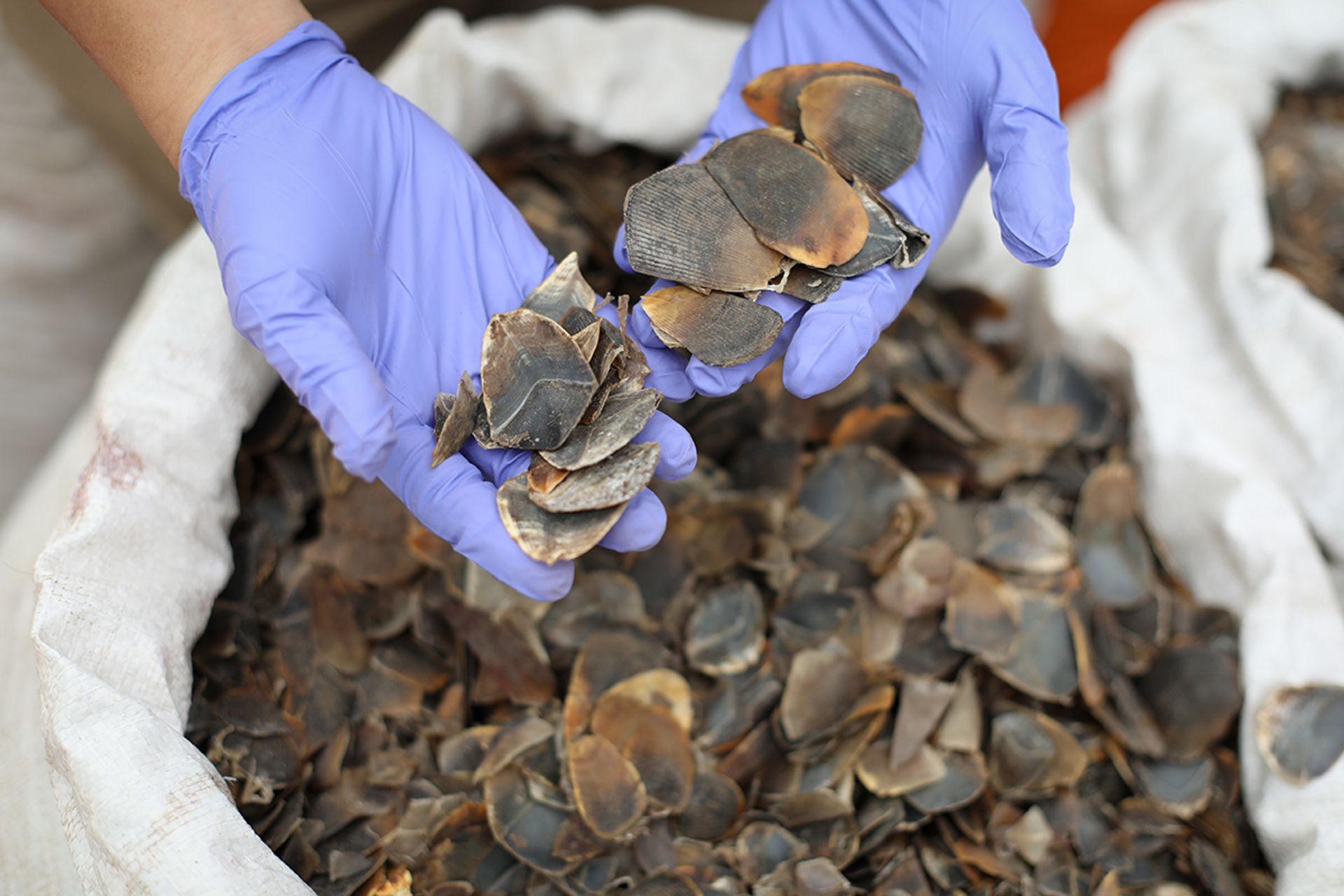
Those who kill, trap, take or keep protected wildlife like the Sunda pangolin without approval can be fined up to $50,000, jailed for up to two years, or both.
NParks confirmed on July 10 that the authorities are investigating the illegal sale of a pangolin.
From 2018 to 2022, it received an average of 238 reports a year regarding the illegal online sale of animals.
NParks’ Animal and Veterinary Service (AVS) investigates all of such feedback and takes action when there is evidence of animals being sold without a pet shop licence, said group director Jessica Kwok.
Return of smuggling
Pet animals sold on these Telegram groups are typically smuggled from Malaysia or covertly bred in Singapore.
Attempts to smuggle live animals across land checkpoints have been on the rise since borders, which were closed for two years due to the Covid-19 pandemic, reopened in April 2022, an Immigration and Checkpoints Authority (ICA) spokesman told ST.
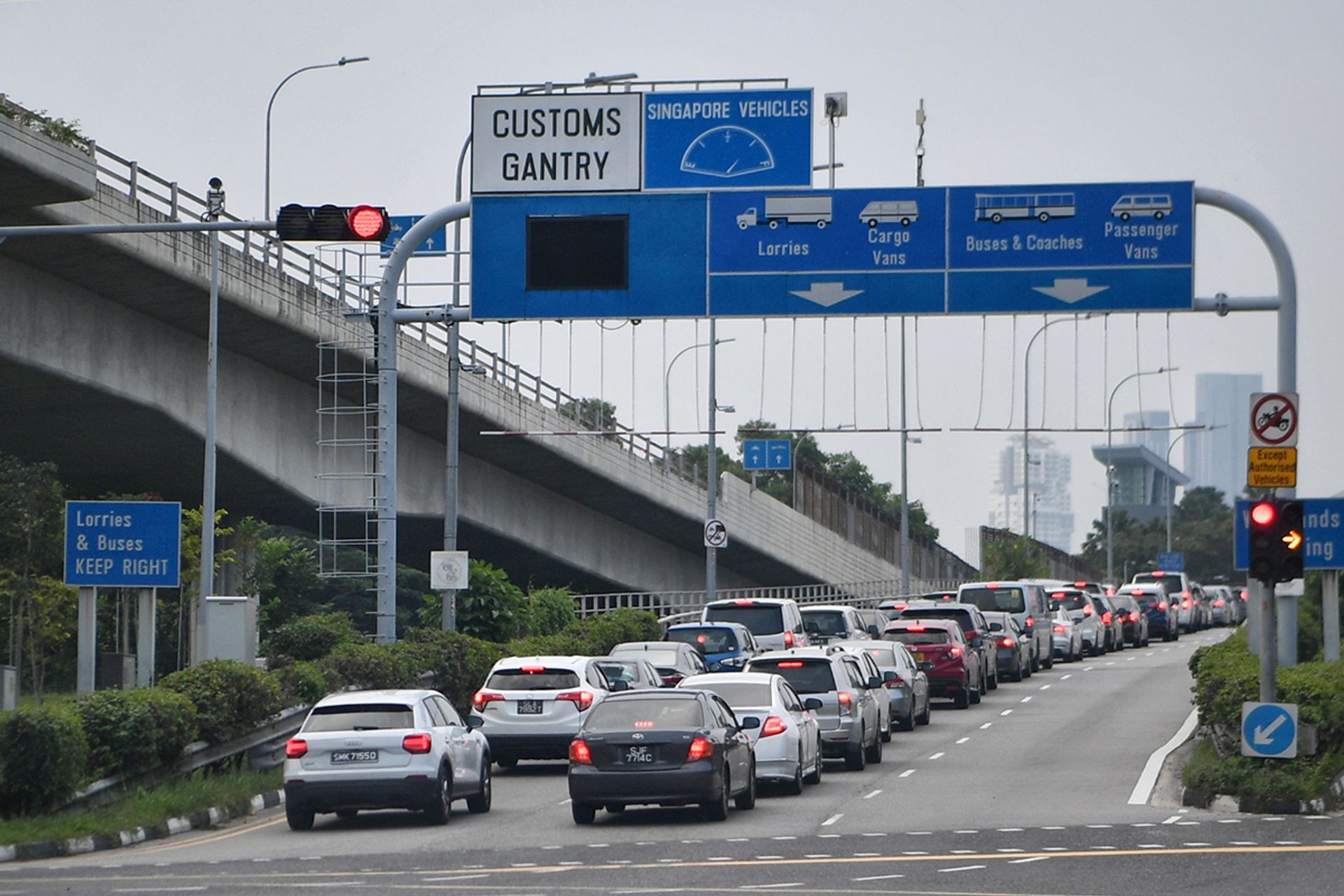
In the six months from October 2022 to March 2023, NParks and its partner agencies like ICA detected 19 cases of pet animals or wildlife smuggling into Singapore.
Such smuggled wildlife over the past four years include reticulated pythons and poison dart frogs, according to NParks.
Illegal farms in Singapore are another source of the illegal pet trade.
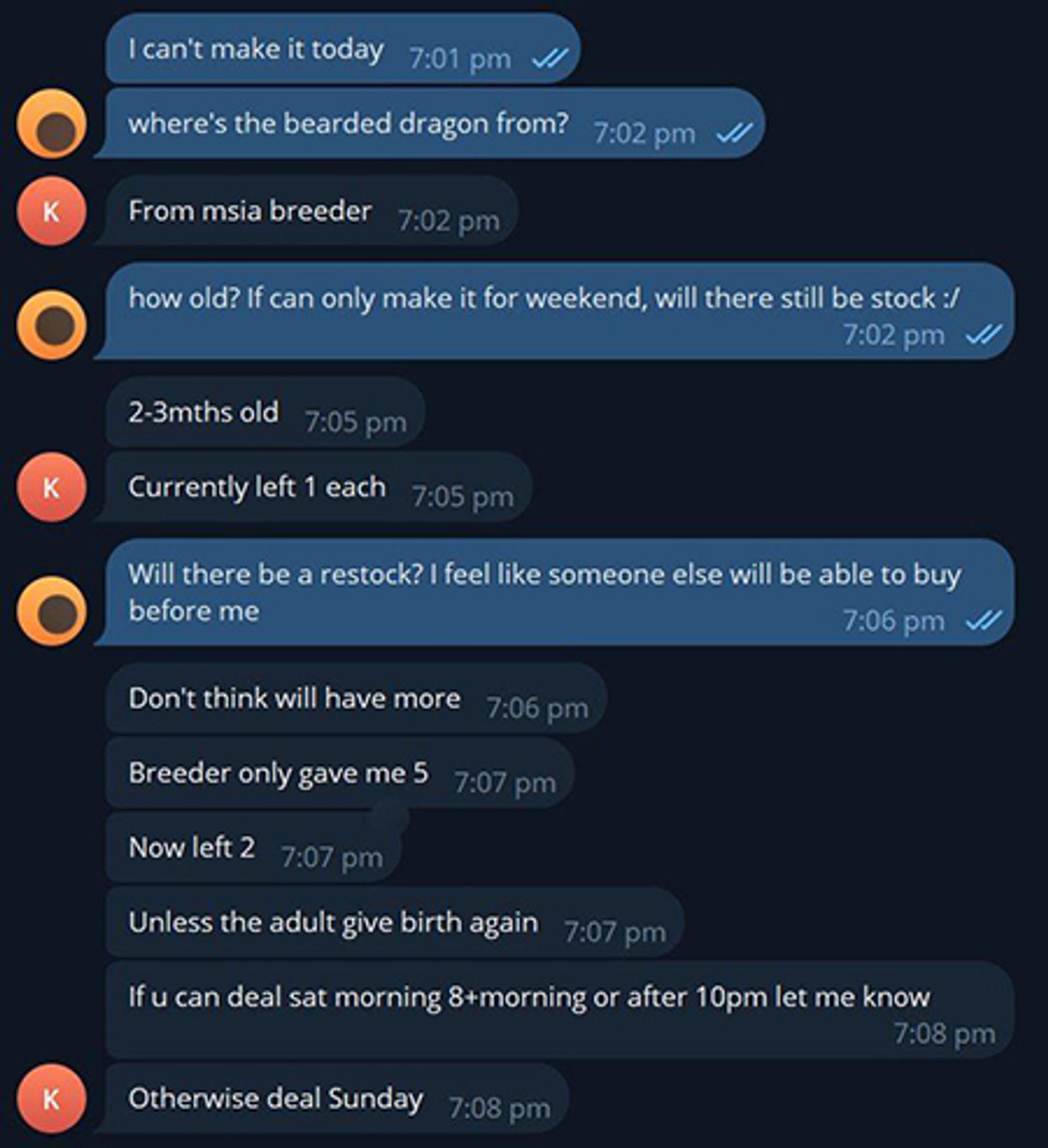
In November 2022, NParks raided a farm in Lim Chu Kang and seized 70 wildlife specimens, including several internationally protected species like the leopard tortoise, Argentine black and white tegu lizard and veiled chameleon.
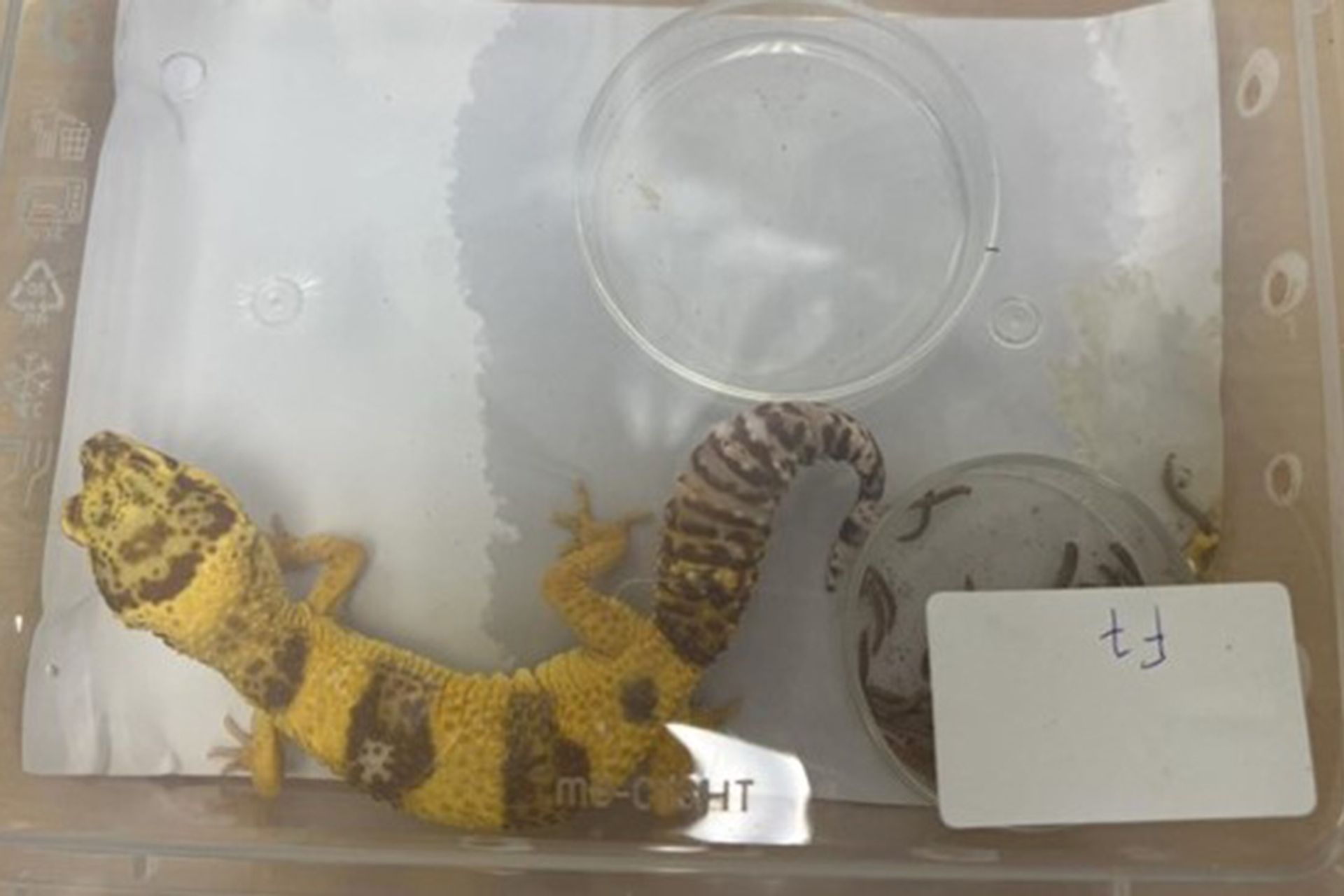
Since July 2022, the maximum jail term for people smuggling wildlife threatened with extinction, such as the Indian star tortoise, has been tripled from two years to six, while the maximum fine has been raised from $50,000 per species to $100,000 per specimen.
Those who sell or keep protected wildlife can be fined up to $50,000, jailed not more than two years or both.
Offenders caught illegally importing wildlife that are not protected species, or unlicensed animals and birds, can be fined up to $10,000, jailed for up to 12 months, or both.
Those selling and keeping unprotected wildlife in Singapore face the same penalties, while those keeping animals and birds in captivity for sale, export or exhibition without a licence face a fine of not more than $5,000, jail for up to six months, or both.
Across the border
Enforcement is complicated as both licensed and illegal animal traders across the Causeway are willing to cater to the demand in Singapore for animals banned here.
In Malaysia, selling exotic pets is permitted in shops licensed by the Wildlife and National Parks Department. Certain protected species like the endangered African spurred tortoises – also known as sulcata tortoises – can be sold if owners get a licence.
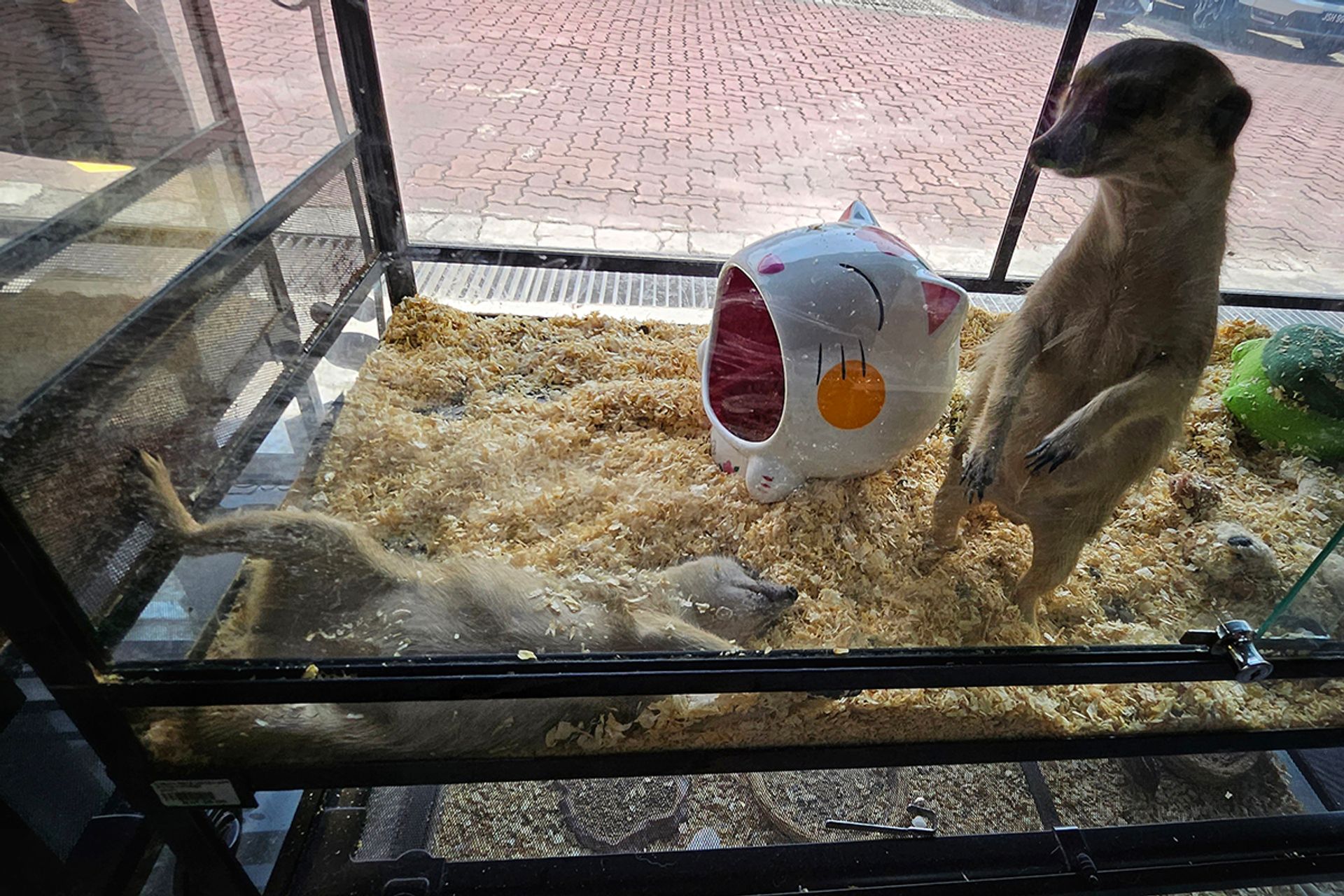
Visits by ST to three licensed pet shops in Johor Bahru found that the exotic creatures and necessities to care for them are readily available.
Sulcata tortoises that cost an average of $290 on online groups were sold for as low as RM550 (S$159) at one licensed pet shop in Malaysia.
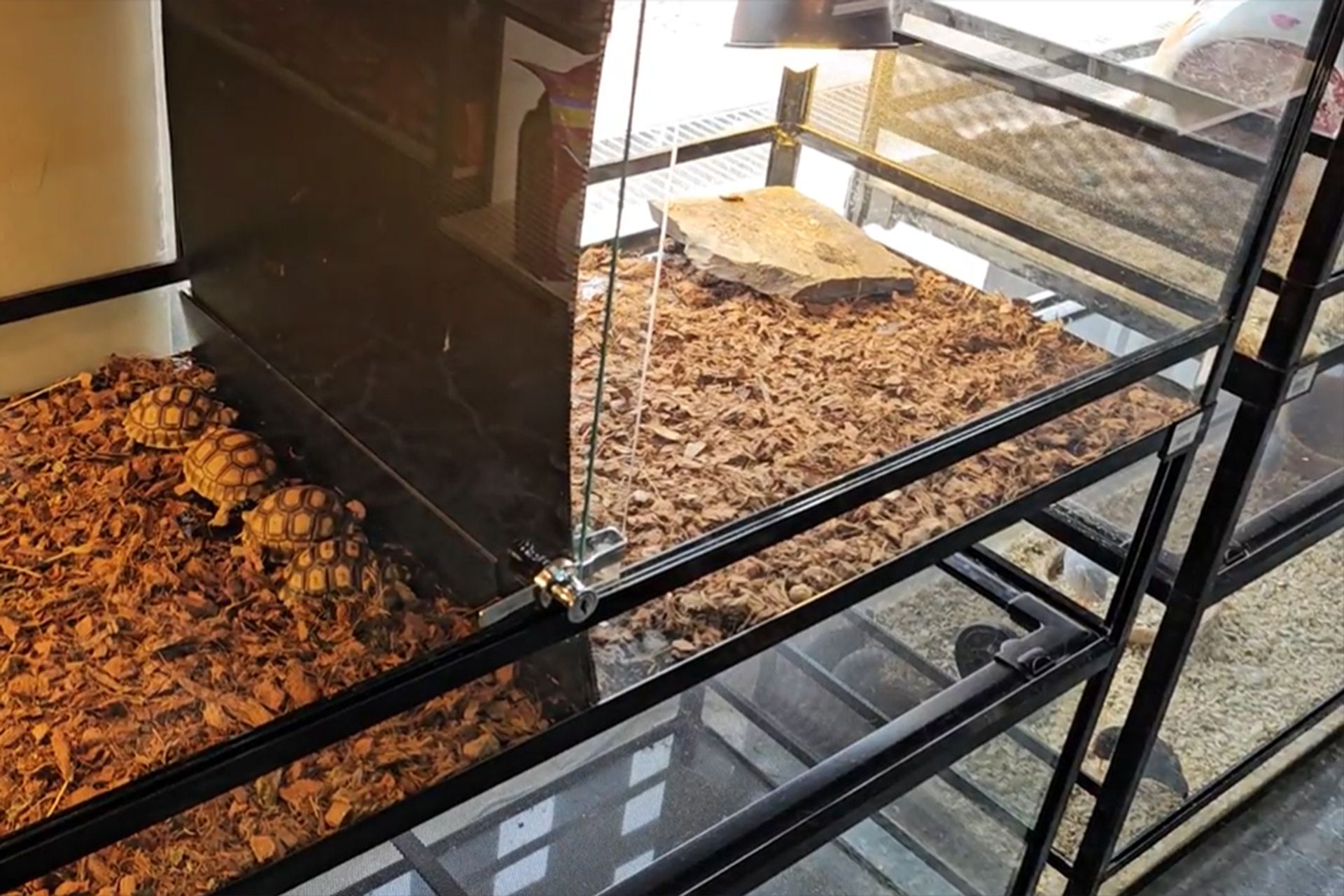
Animals, including meerkats, marmoset monkeys and pythons, are packed side-by-side in aquariums, cages and containers to maximise narrow shop spaces.
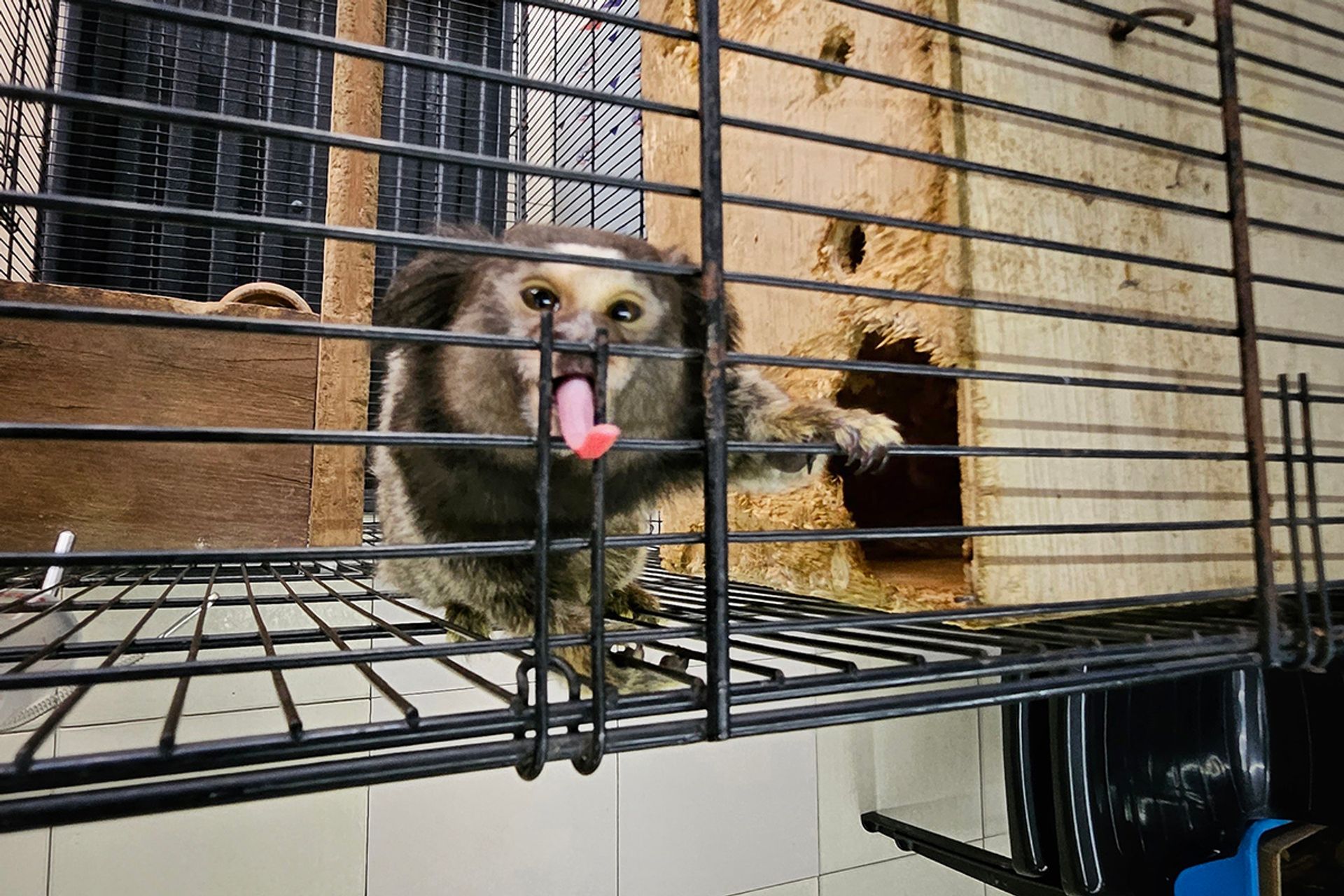
Dozens of colourful leopard geckos and corn snakes with names such as lemon frost and blacknight cross were displayed like flavours in a candy store in the shops this reporter visited, posing as a buyer.
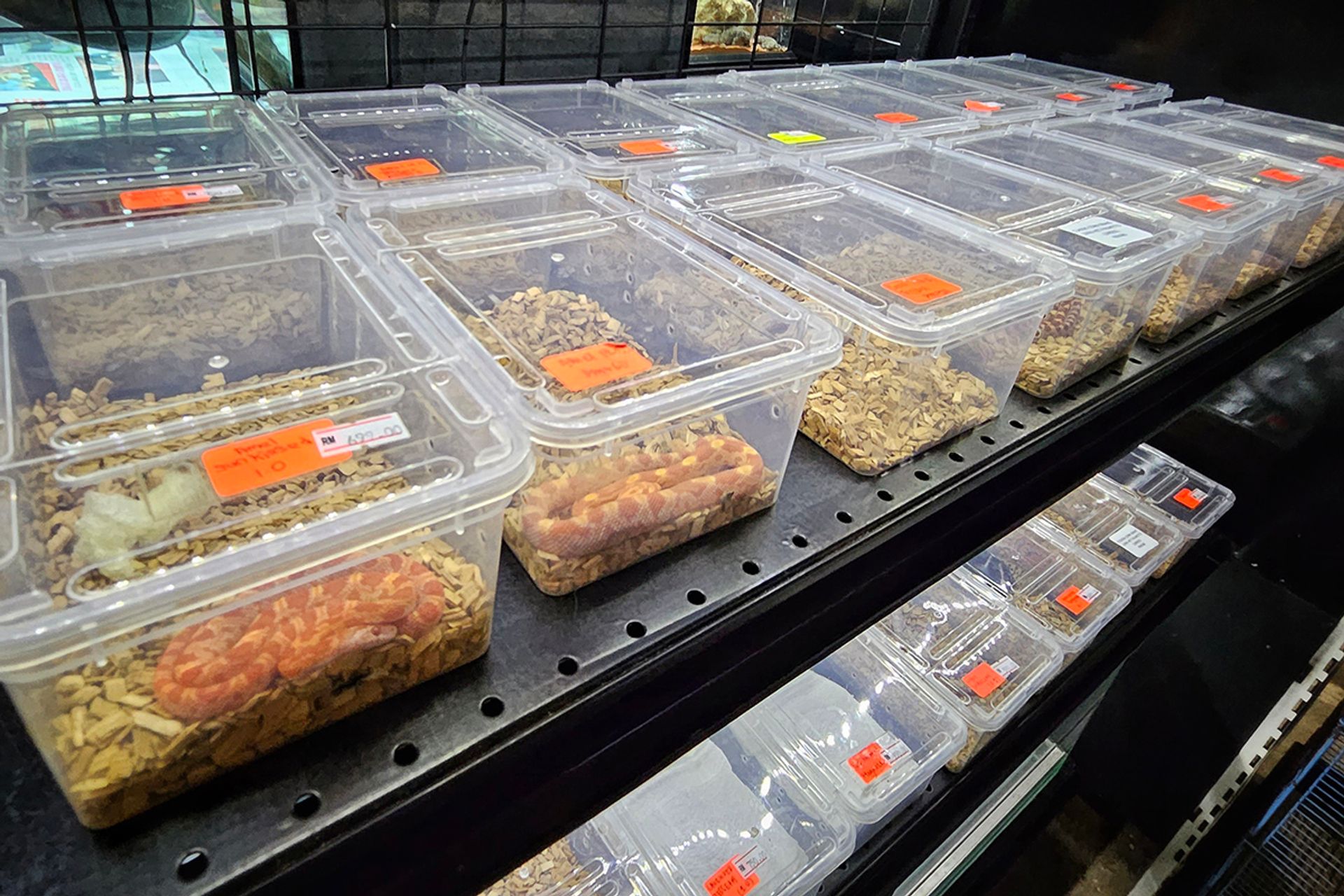
While going through the motions of buying a hedgehog in one shop and a sulcata tortoise at another – but without finalising the sales – ST was offered small plastic boxes to transport the animals, although staff declined to share ways to smuggle the animals across the Causeway.
Shop staff said Singaporeans buying protected species do not need to purchase a licence from Malaysian authorities.
A shopkeeper said: “If you buy and cross the border, a licence doesn’t matter because it’s totally illegal.”
Pet items such as food, which could implicate a buyer, can also be disguised. Pet food exported to Singapore must be accompanied by a cargo clearance permit.
The shopkeeper offered to disguise tortoise food by switching the packaging for a box.
“You can still buy protected animals if you’re not a Malaysian citizen, but you will have to bear the consequences if you are caught,” said a staff member in Mandarin at another shop.
Those who do not have an appetite for risk can turn to “shipper” or “runner” services from cities like Kuala Lumpur and Johor Bahru, where couriers help to transport the banned animals at an average cost of RM350 (S$100), three sellers told ST.
However, those who are willing to brave checks at the borders to save on delivery costs can find plenty of advice on Telegram, where sellers also teach customers how to hide the animals in the various nooks and crannies of a vehicle.

One seller in Malaysia said: “It’s very easy to hide tortoises in your car, in the back of your seat. (Customs officers) don’t open the bonnet. Or in your spare tyre.”
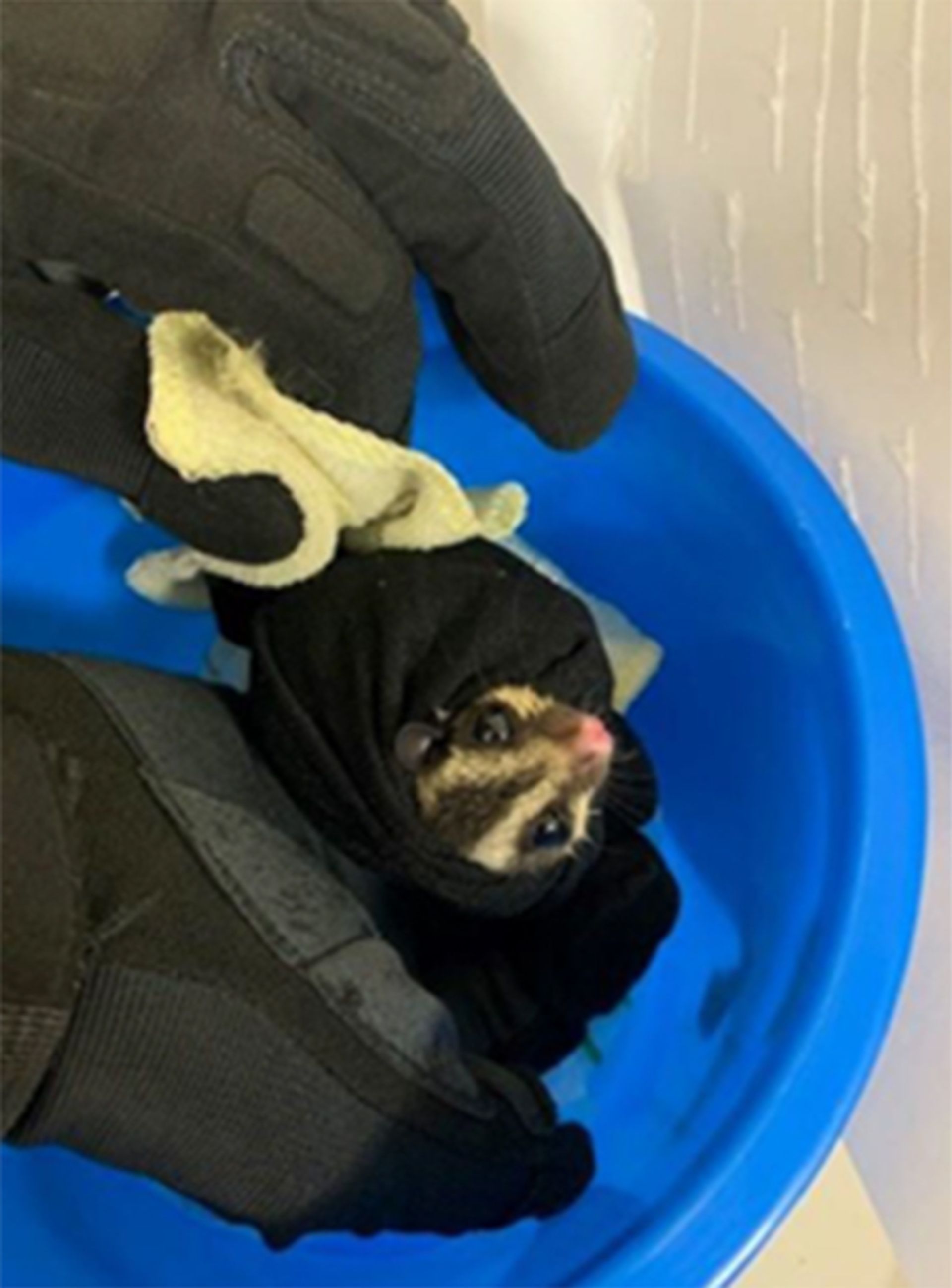
In the past two years, officers at the land checkpoints in Singapore have found a red-eyed crocodile skink and a leopard gecko concealed in a vehicle’s glove compartment, sugar gliders hidden in a pail and stuffed in a soft toy, and 337 birds crammed underneath a makeshift bed behind a driver’s seat, to name a few cases.
As these offences are before the courts or being investigated, NParks did not comment further.
Caring for illegal pets
Even though avid hobbyists are willing to risk imprisonment and fines to care for an illegal animal companion, looking after them long-term is no walk in the park.
Smuggled animals are not always in the prime of health despite their hefty price tags, which can exceed $3,000 for an Aldabra giant tortoise, a Seychelles native.

Imported animals that make it across the border often arrive in a poor state because they are smuggled in cramped conditions, said Dr Chang Siow Foong, who is also a group director at AVS.
“Some animals die, (others) transmit diseases to each other... It’s not the right way to treat animals,” he said.
Bringing in pets by circumventing checks also carries the risk of spreading diseases to humans.
Dr Chang said: “Some 75 per cent of human diseases are actually zoonotic, meaning they actually have origins in animals... During the smuggling process, there’s usually mixing of species – that’s how diseases perpetuate.”
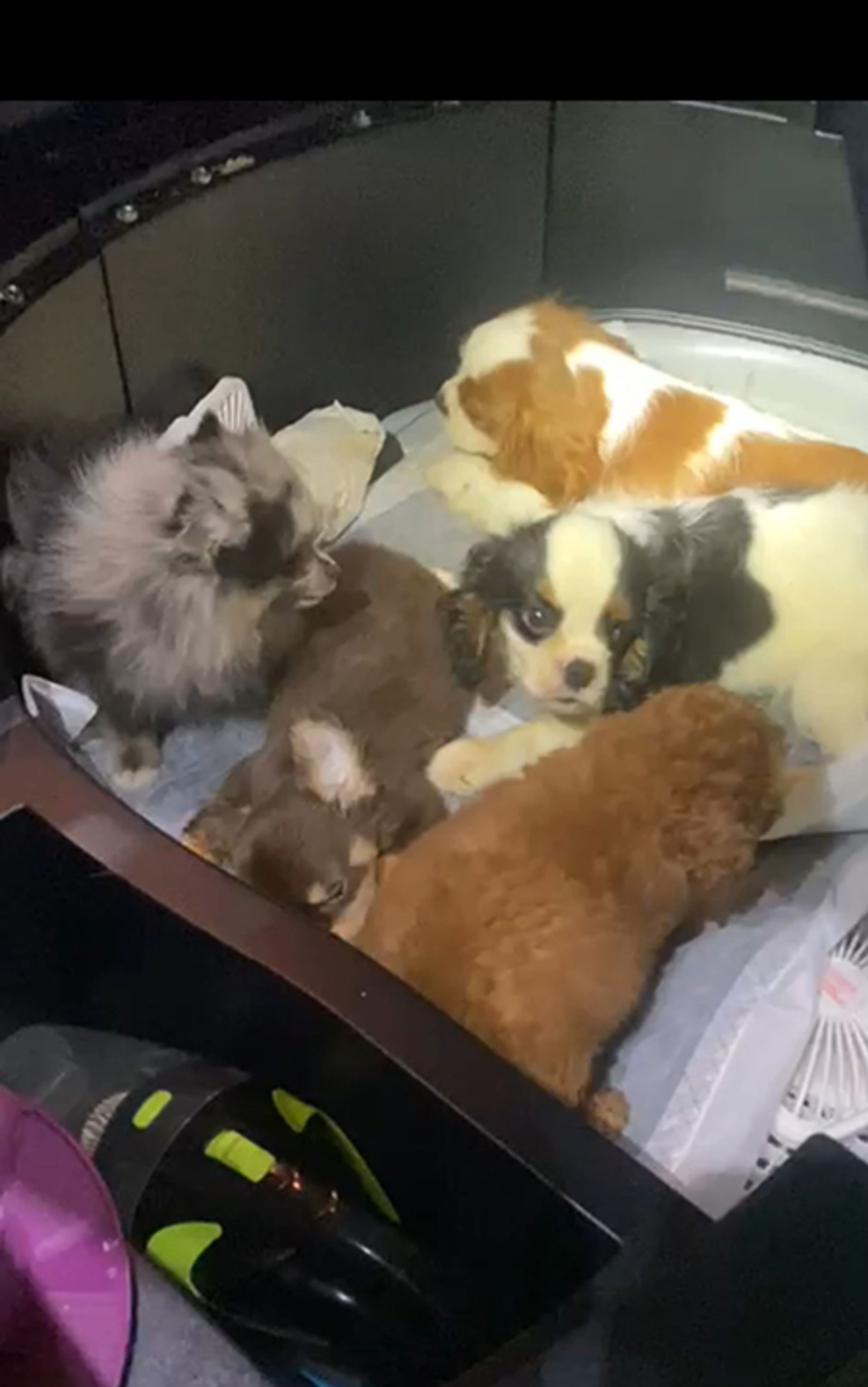
Vets are also confronted with ethical dilemmas when treating illegal pets.
Dr Cathy Chan of The Animal Doctors clinic said vets are only permitted to provide first aid and facilitate rehabilitation and release of wildlife with established wildlife rehabilitation centres.
She said: “It’s always tricky if an animal has been brought in illegally, then subsequently becomes domesticated and a pet over several years. The pet would have formed a bond with the owner.”
About half of the wildlife rescued from illegal trade by the Animal Concerns Research and Education Society (Acres) end up dying, usually because of stress and underlying health issues from sub-optimal care, said the animal welfare charity’s co-chief executive, Ms Anbarasi Boopal.
Unlike animals that are registered, rescued animals do not have owners to provide their medical history and diet, which makes it more challenging to treat them, she noted.
Back in the wild
In some instances, exotic animals may be unable to acclimatise to the weather and conditions here, or fall sick, and are thrown away by their owners.
Some are found, and rehabilitated and homed at organisations allowed to care for them, such as Acres in Tengah.
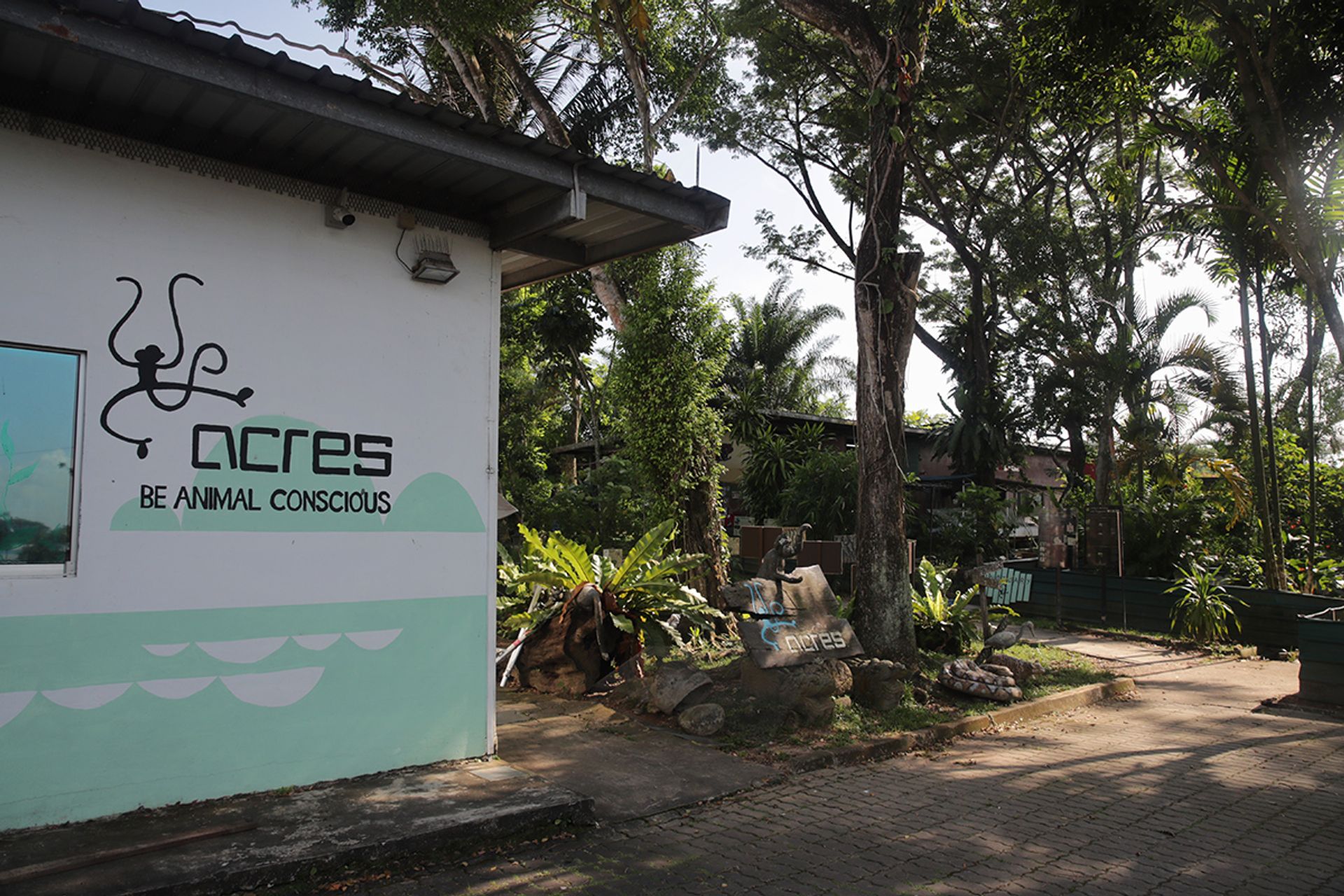
Past rescues have included hedgehogs covered in maggots and wounds as well as Indian star tortoises, which typically have respiratory problems due to Singapore’s humidity, said Ms Anbarasi.
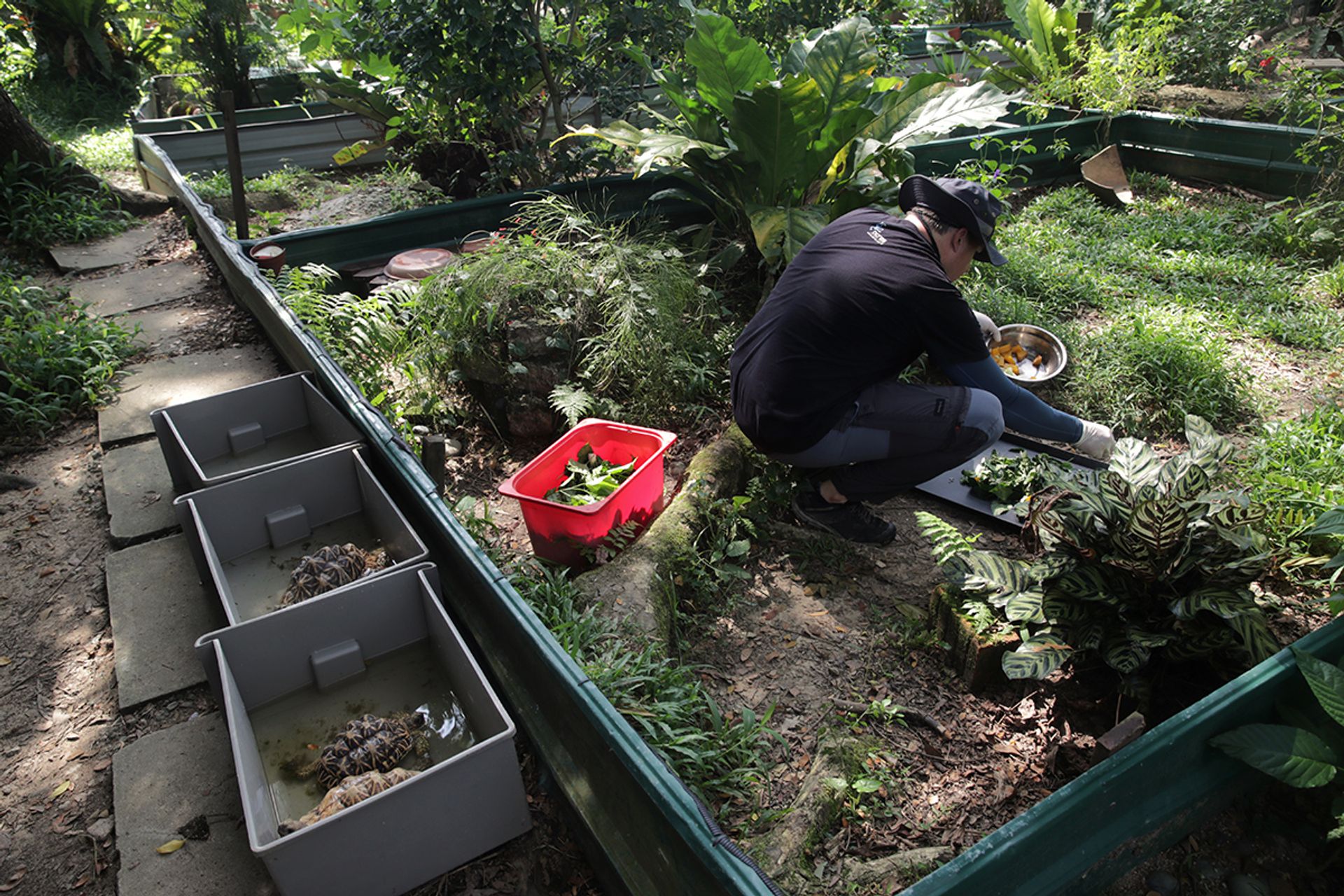
If repatriation is not possible, most of the non-native animals rescued by Acres spend the remainder of their lives in the 0.5ha facility.

But its limited resources to provide optimal care for exotic animals mean that inquirers are referred to NParks when the facility is at full capacity.
The release of these exotic pets in the wild impacts the biodiversity in Singapore as they compete with native animals and risk spreading disease, said Dr Anna Wong (below), NParks’ director of wildlife trade, whose team monitors and combats the illegal trade of wildlife.
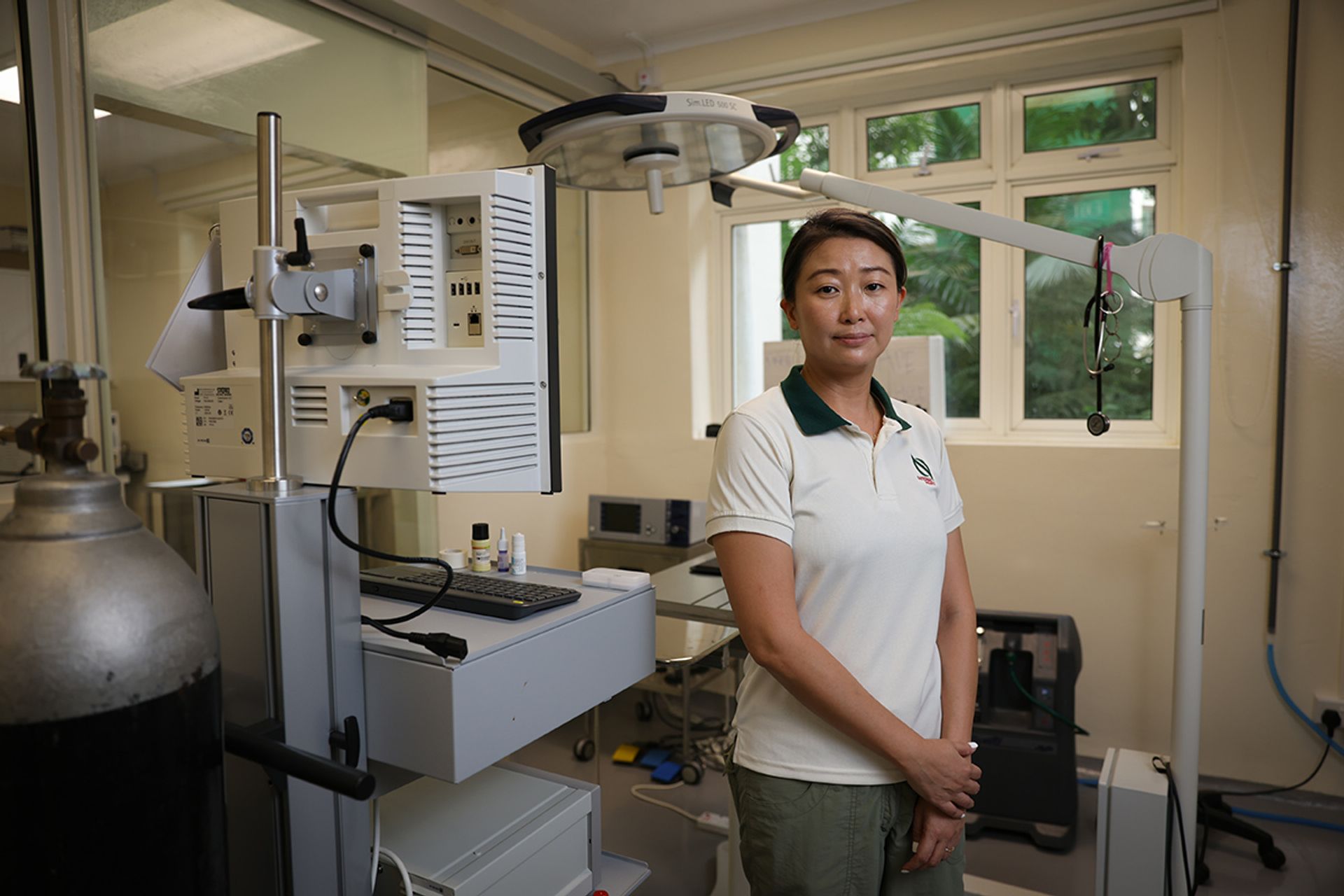
She added: “One classic example is the green iguana, which you can see everywhere. They are actually not native and were pets.”

The species, which likely originated from the exotic pet trade, is native to the Middle East and South America. A 2019 study found that these iguanas harbour invasive reptile parasites and could threaten native species by competing for territory and nesting sites.
Crackdown
The proliferation of illegal wildlife pets offered online is evidence that Singapore is not only a transit hub but also a consumer country, said Traffic’s Ms Chng.
One way to regulate the trade will be to require owners of wildlife pets to register their animals, particularly birds, she suggested, adding that there are currently no means to prove that owners obtained their wildlife pets from licensed pet shops.
Said Ms Chng: “This would require proof of legal purchase and a record of any change in ownership or disposal of the animal, and allows action to be taken against those who illegally buy wildlife.”
NParks’ Ms Kwok said it tackles the illicit pet trade through a multi-pronged approach. This includes monitoring physical and online marketplaces and executing sting operations to arrest those suspected of illegal wildlife trade activities.
Said Dr Wong: “It’s not about acting on each and every sale. It’s monitoring, to observe how the trend is and how the network is within... For any group chat or marketplace, if you close it, another one will just come up.”
To counter smugglers, the authorities have ramped up their detection and prevention capabilities in recent years – including using dogs from the K9 unit to sniff out smuggled animals and wildlife products, like ivory and pangolin scales.

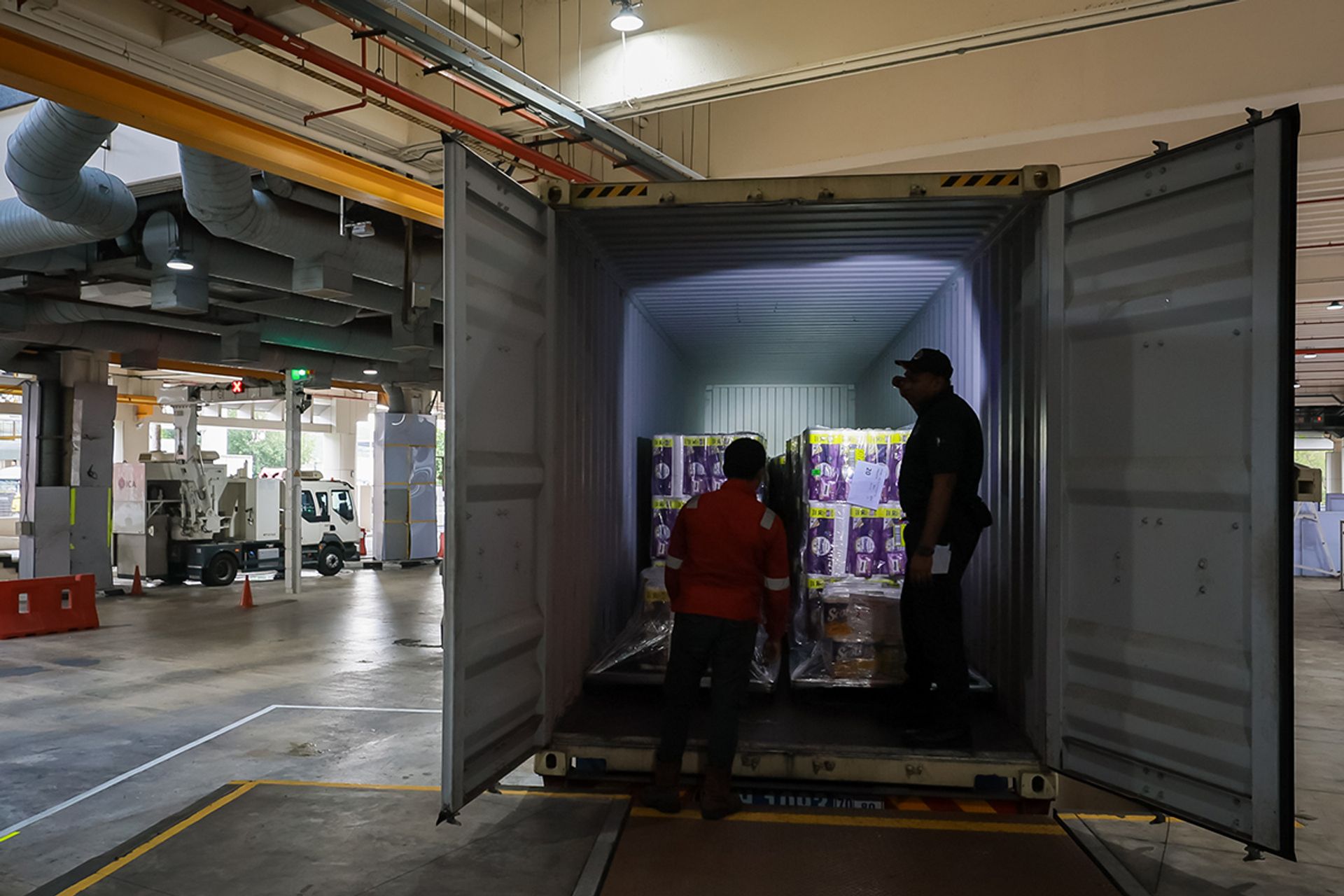
Seized animals are taken to the NParks-run Centre for Wildlife Rehabilitation to be cared for while investigations are ongoing, according to Dr Wong.
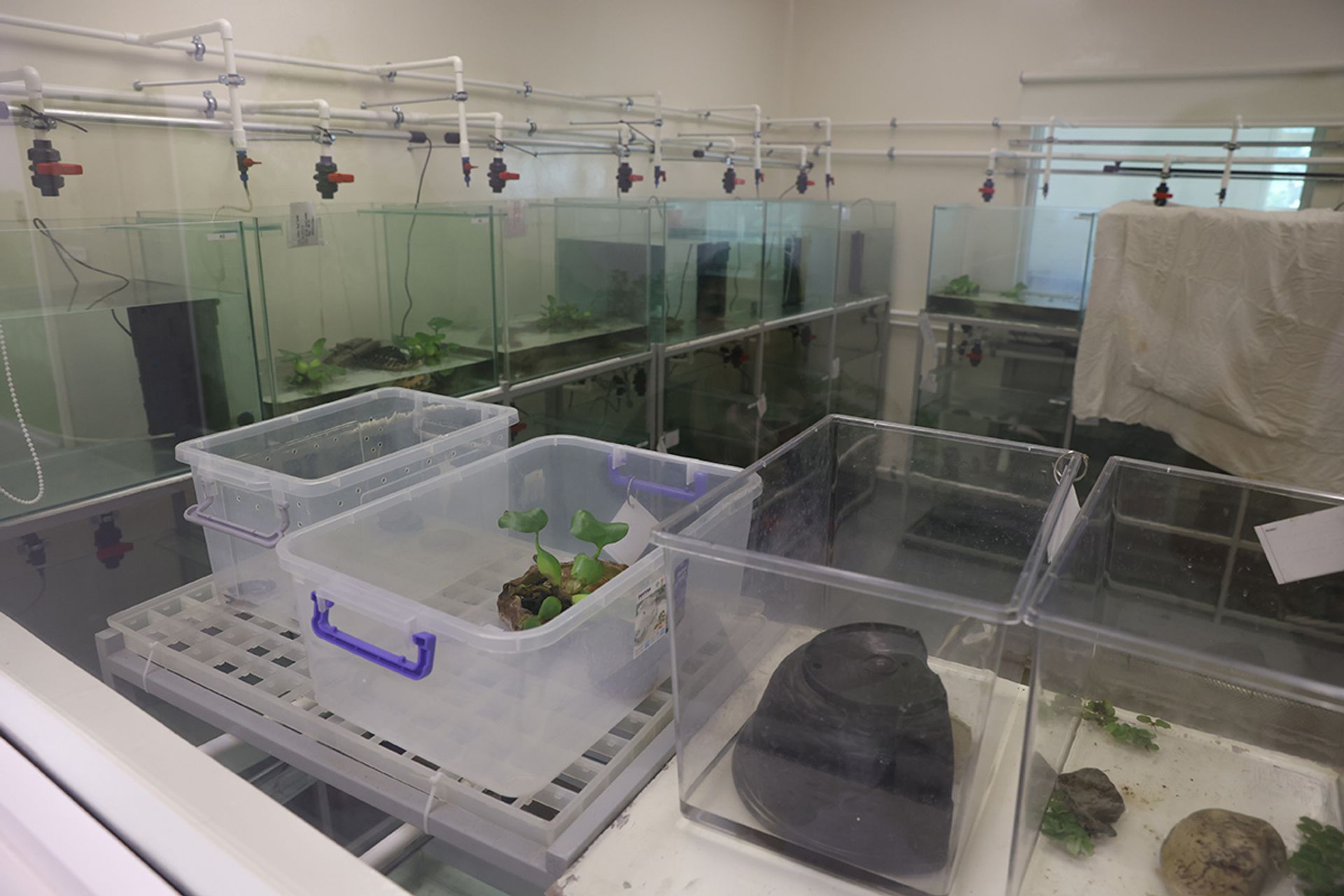
She said: “Once the case has concluded, native wildlife will be released back into their natural habitats, while non-native wildlife will be repatriated if a recipient country can be found.
“If repatriation is not possible, other options include reaching out to organisations such as Mandai Wildlife Group to care for these animals as part of their collection.”
Pursuing an illegal passion
Reptile hobbyist Randal Harknis once kept two central bearded dragons and a green iguana in his flat in Yishun, sourcing them through the illegal wildlife trade.
The 31-year-old Singaporean had a keen interest in dinosaurs and reptiles while growing up, which ballooned into an “unchecked obsession” to have a pet lizard, even though he knew it was against the law.
In 2021, he was fined $8,000 for keeping banned pets, and for abetting the importation of an Argentine black-and-white tegu lizard into Singapore via the Woodlands Checkpoint.
Mr Harknis still remembers the night his pets were seized. “I was staring at these enclosures that used to be so filled with life for many years. And all I saw was emptiness and that really, really, broke me because I really cared for these animals. They really meant a lot to me.”
WHY CANNOT
While he has accepted his punishment, he questioned the rationale for banning most reptiles as pets in Singapore, since keeping other wild animals like birds and tropical fish is legal.
The videographer said: “I think ‘exotic pets’ is such a broad term that gets used so loosely these days.
“And it gets painted in such a negative light in Singapore, where the narrative is about how horrible and illegal it is.
GROWING INTEREST
While there have been pockets of people curious about exotic animals, Mr Harknis believes the market could be set to boom.
In recent years, some social media personalities with huge followings have begun to create content about the positive experiences they have caring for these creatures, which are legal to keep elsewhere, he said.
One example is American YouTuber Brian Barczyk, who films exotic animals that he rears and has a following of more than five million subscribers.
Mr Harknis said: “There will always be a market for exotics and, in my opinion, it will grow exponentially in the coming decade as the TikTok or social media generation come of age and have that purchasing power.”
But the passion for keeping exotics should not be fed by the illegal wildlife trade, as it compromises the health and welfare of these animals, said Mr Harknis, who now has a Malayan box turtle, which is legal to rear here.
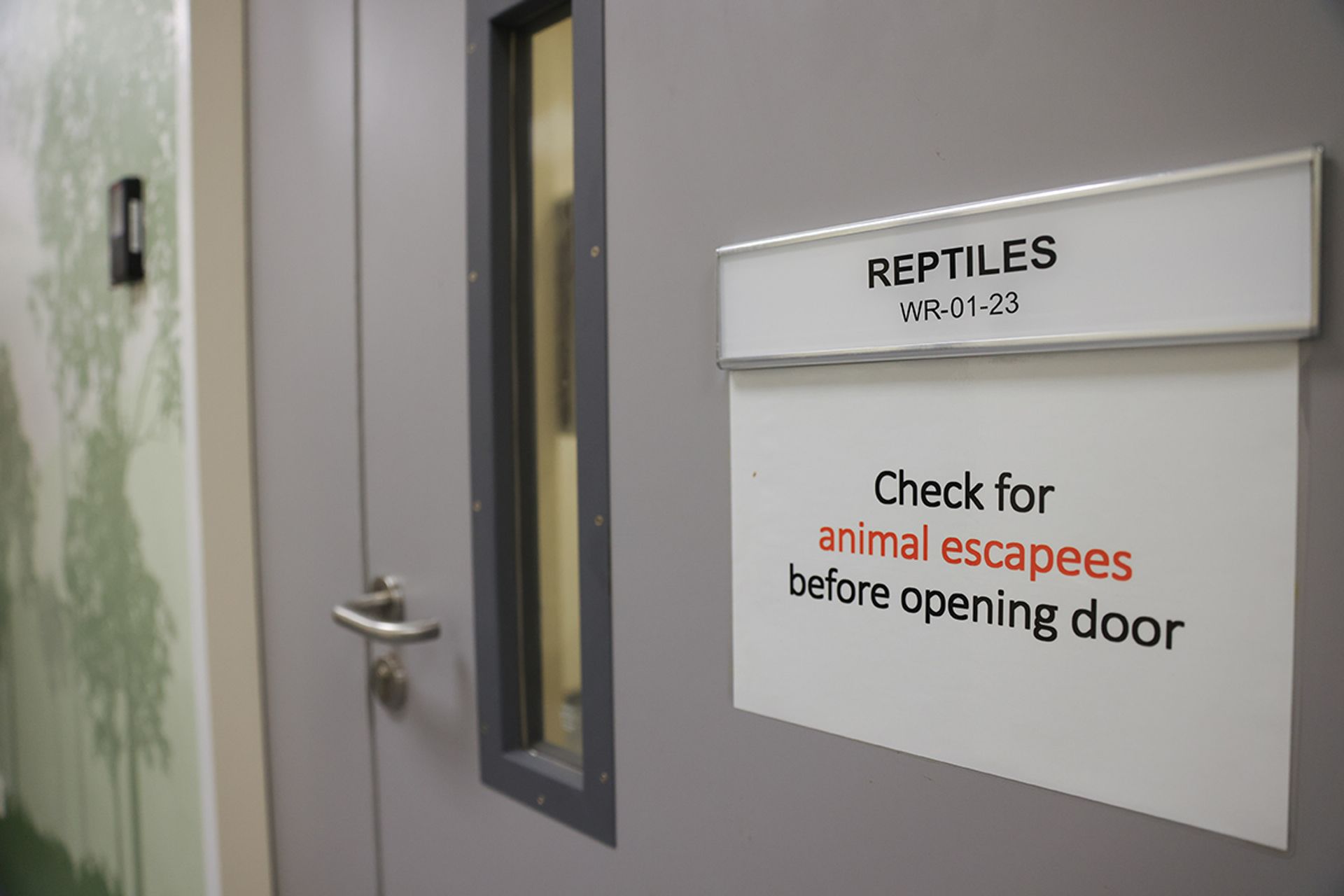
He said: “Because the hobby is mostly illegal, there’s no way pet keepers are going to walk into a vet clinic with their lizard or snake to get it medical treatment.
“They’ll resort to home remedies instead by Googling symptoms and what not. This ends up with both keeper and animal ultimately suffering, which is another reason why I don’t advocate that people keep these animals in Singapore, where they are illegal.”
Abandoned residents of Acres
Meet some of the animal residents of Acres that likely originated from the exotic pet trade. Most were brought in or rescued ill or injured.
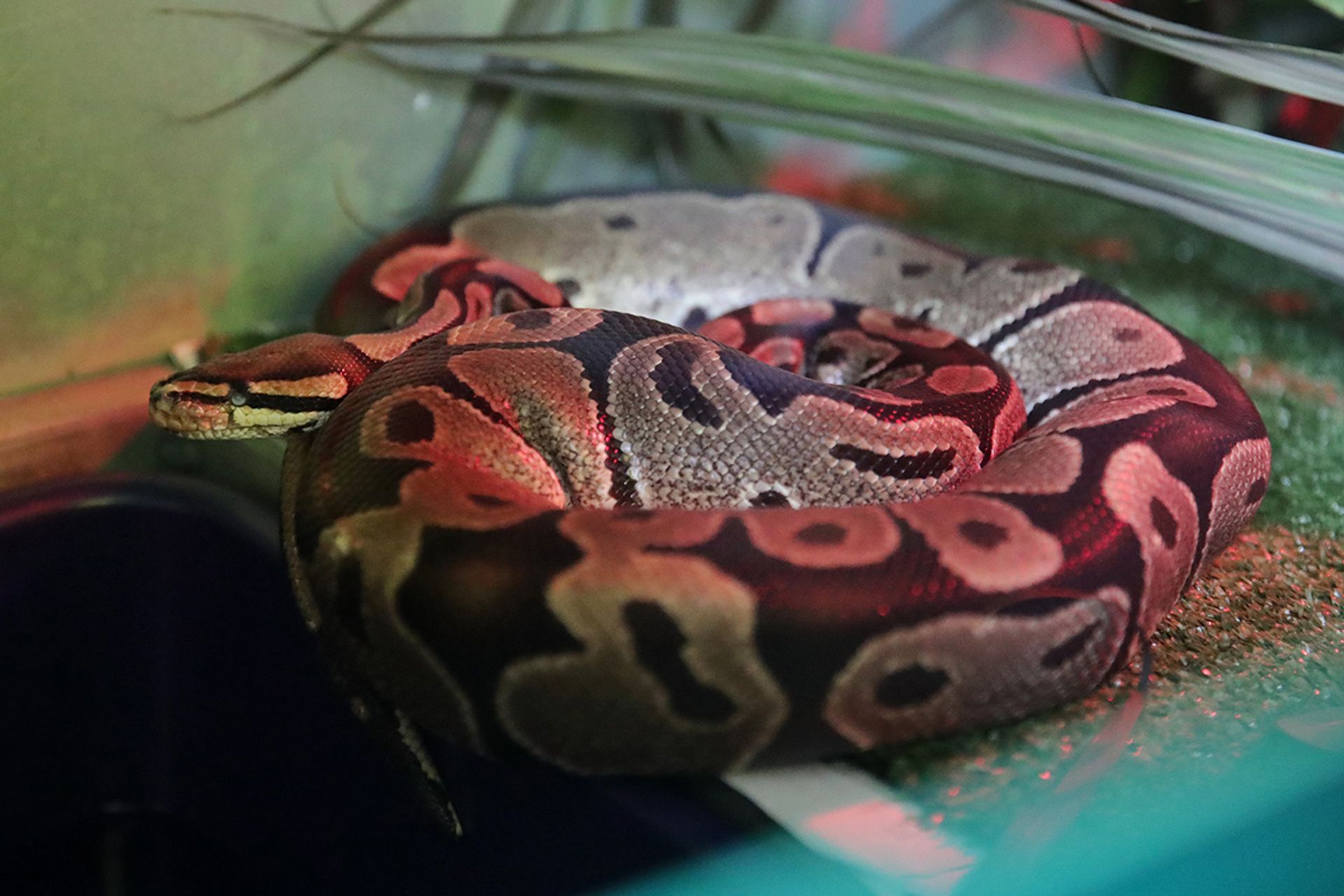
Jerry the radiated tortoise
Jerry is a critically endangered radiated tortoise native to the island of Madagascar that was found in a bin centre.
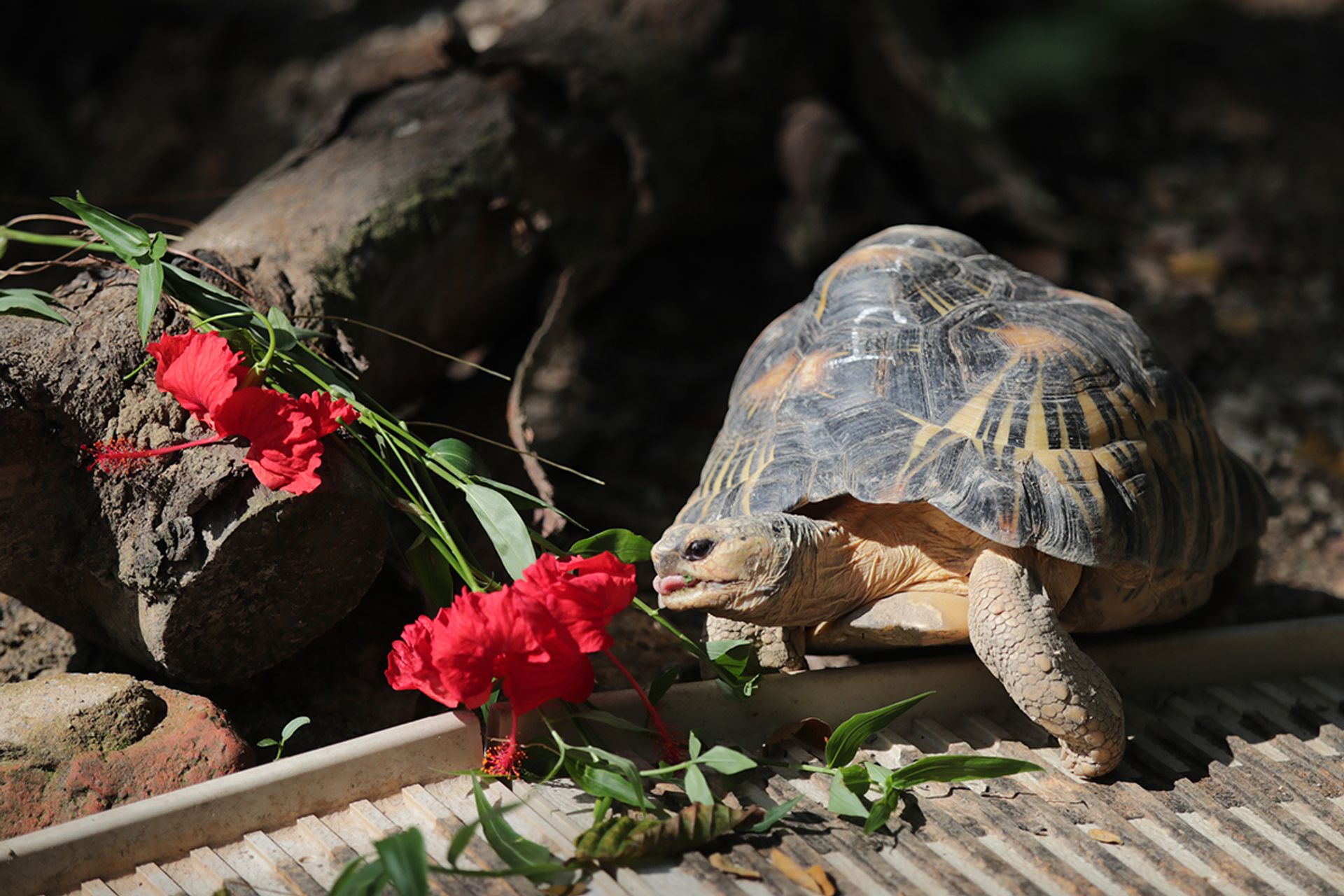
It was one of two radiated tortoises – the second one was named Tom – and a leopard tortoise discovered by a condominium’s security guards who saw a cardboard box moving.
Said Acres’ Ms Anbarasi: “Tom did not make it; he was very sick.”
But Jerry survived, albeit with shell deformities, an ailment that occurs in tortoises when they are not given proper calcium and sufficient sunlight. This can result in health problems because the reptiles’ organs cannot grow properly when compressed by their shells.
About 90 per cent of tortoises rescued by Acres face health complications, such as nutritional deficiencies, organ failures or shell deformities, said Ms Anbarasi.

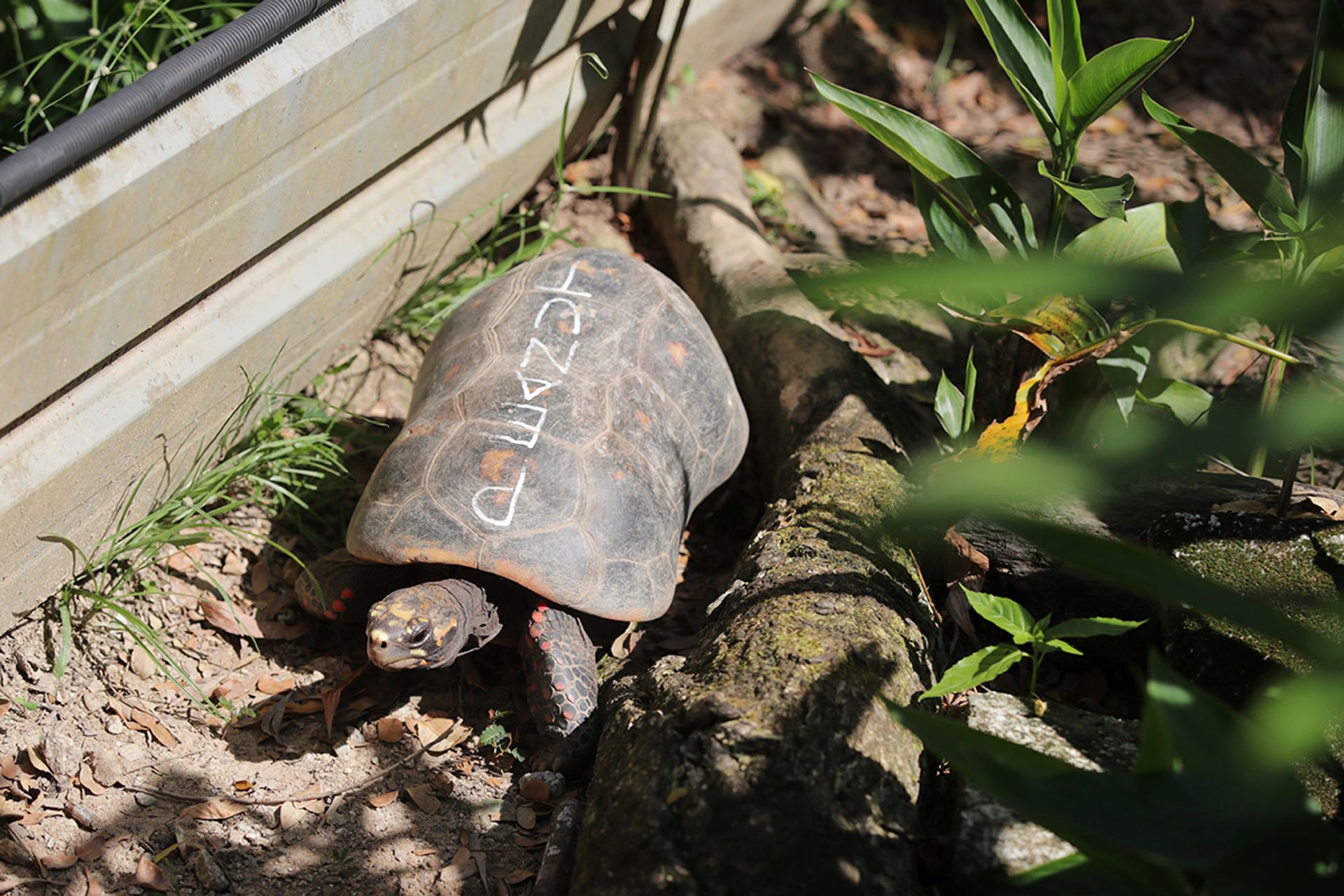
She added: “For tortoises, it’s very hard to tell what’s going on with them because of their shell.
“That's why we have preventive measures in place. For example, we soak our tortoises in warm water daily to ensure that there is no blood or parasites in their faeces and deworm them periodically.”
Godzilla and Bobo the green iguanas
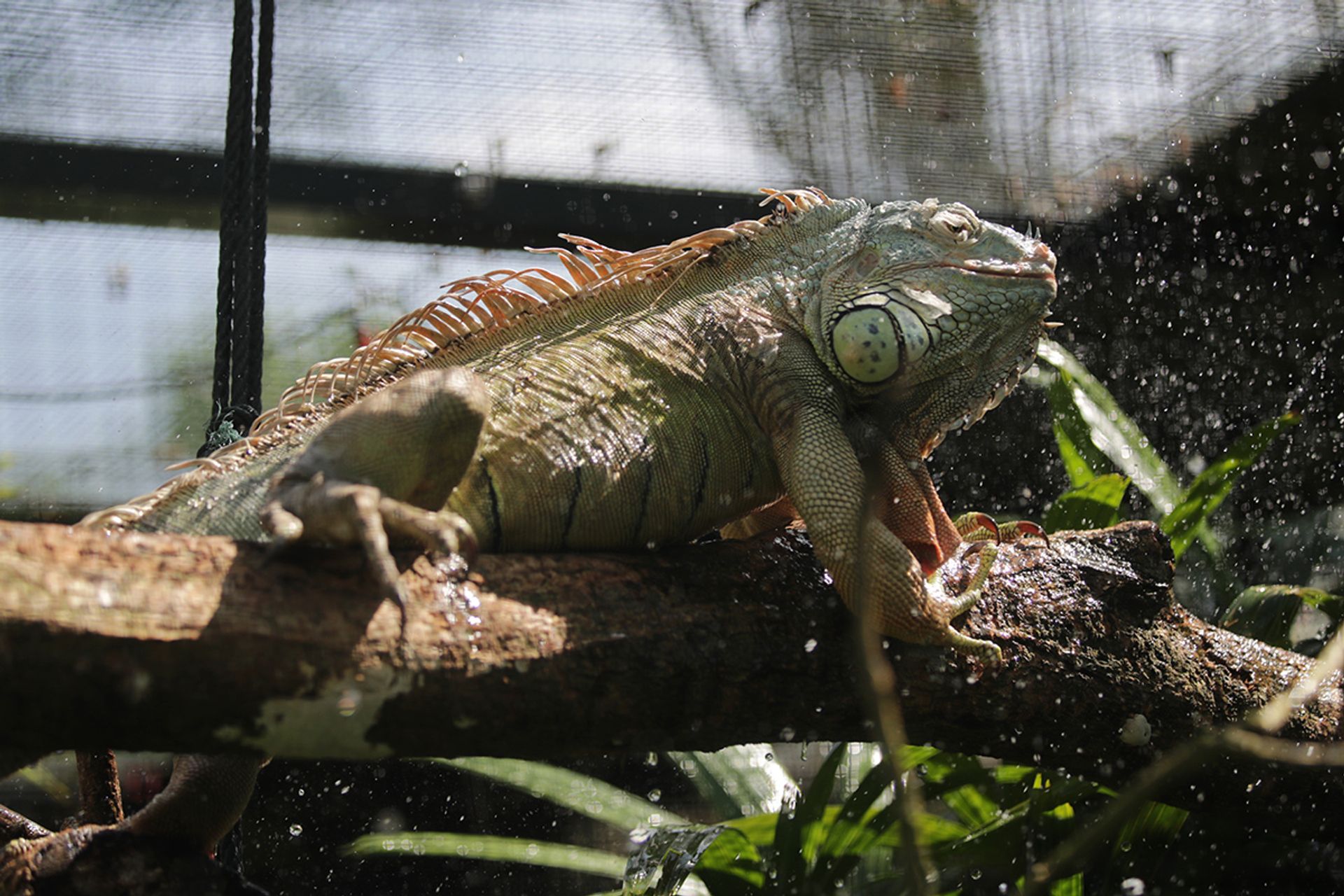
Basking in the sun, Godzilla enjoys a glistening spray in its enclosure.
The reptile originates from tropical Latin America. It was introduced to Singapore via the exotic pet trade and has been sighted around the island since the turn of the 21st century.
Green iguanas rescued by Acres are typically abandoned pets. In one case, the charity found one chucked into a veterinary clinic dumpster, said Ms Anbarasi.
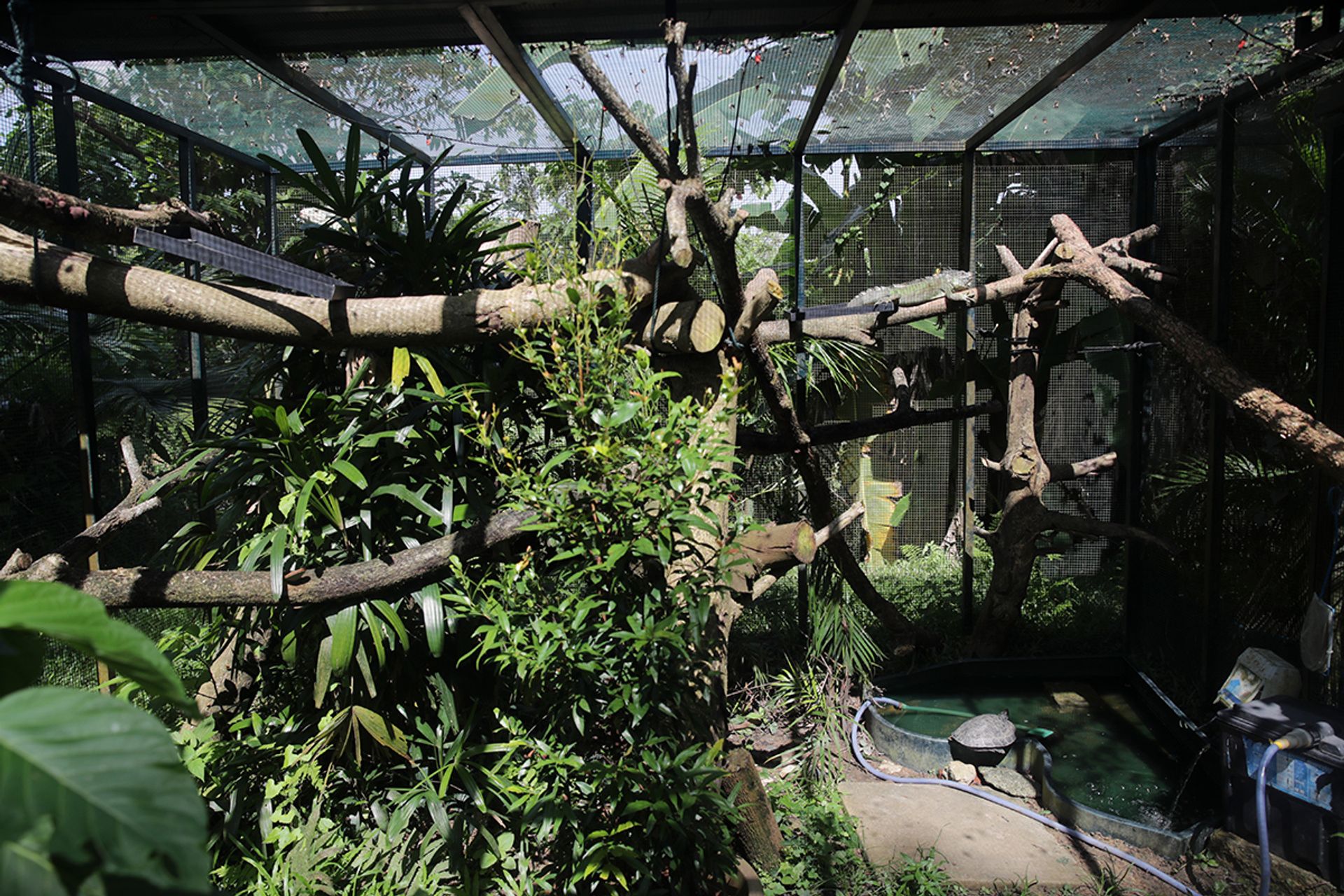
While there appears to be a feral population of green iguanas in Sungei Tengah near Acres, both Godzilla and Bobo will not be released into the wild because they are considered non-native.
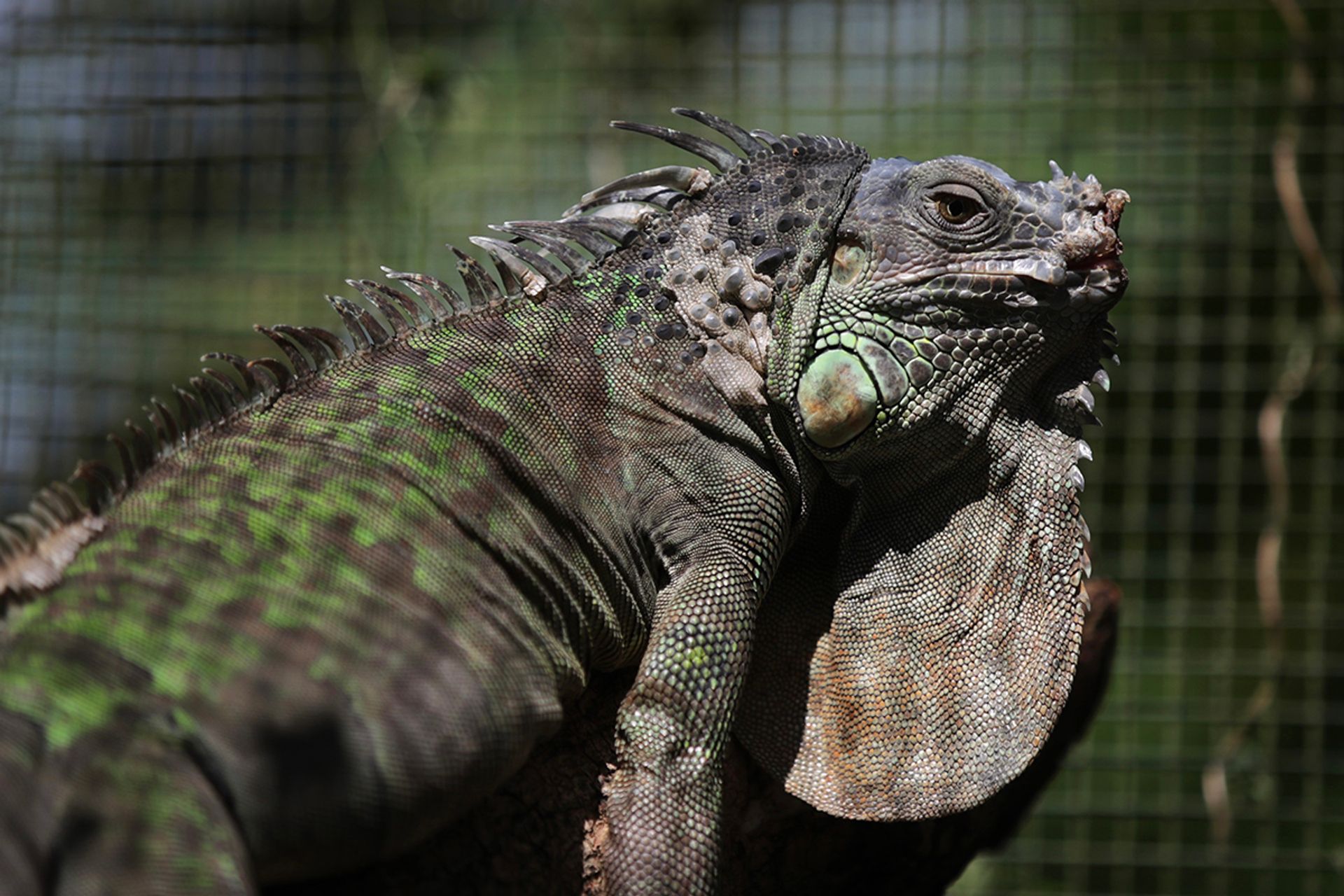
They will likely spend the rest of their lives at Acres as it is unlikely that their native country will want them. In captivity, green iguanas can live up to 20 years, said Ms Anbarasi.
Explaining why such pets are abandoned, she said: “When they grow big, people don’t know what to do with them. And they can bite.”
Amber and Timothy the sulcata tortoises
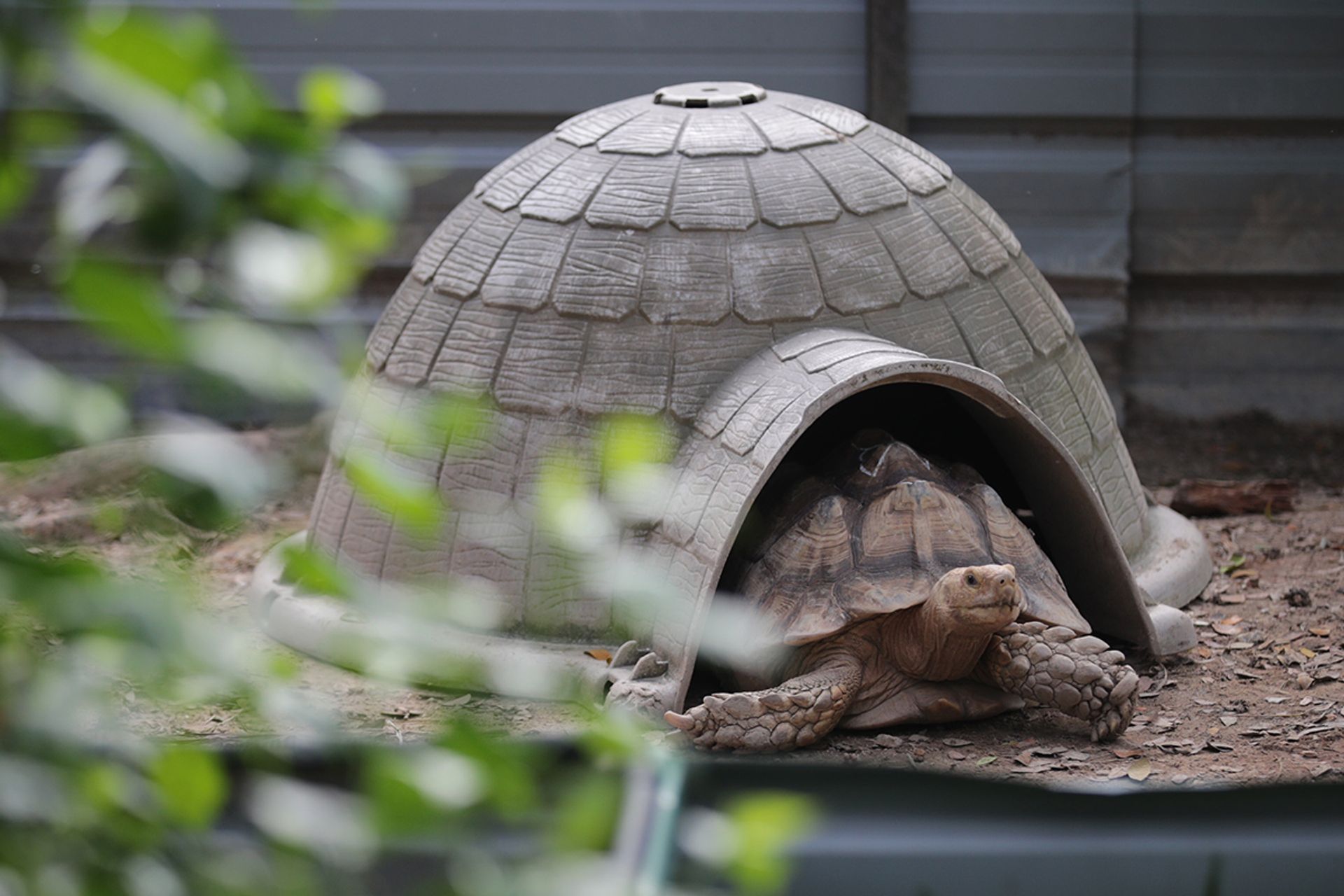
Nine sulcata tortoises live at Acres. They are also known as the African spurred tortoise, and are naturally found on the southern edge of the Sahara Desert.
The endangered animal is the world’s third-largest tortoise, weighing up to 90kg, and can live about 50 years.
Among these resident tortoises are Amber, who was found lumbering near Upper Peirce Reservoir, and Timothy – the largest of the nine – who was handed over to Acres by a veterinary clinic.
Sulcata tortoises are usually smuggled when they are smaller and are dumped when they grow too big for people to care for them, said Ms Anbarasi.
In Johor Bahru, a palm-sized sulcata tortoise is sold for as low as RM550 (S$159), almost half the price cited by online smugglers.
Leopard gecko
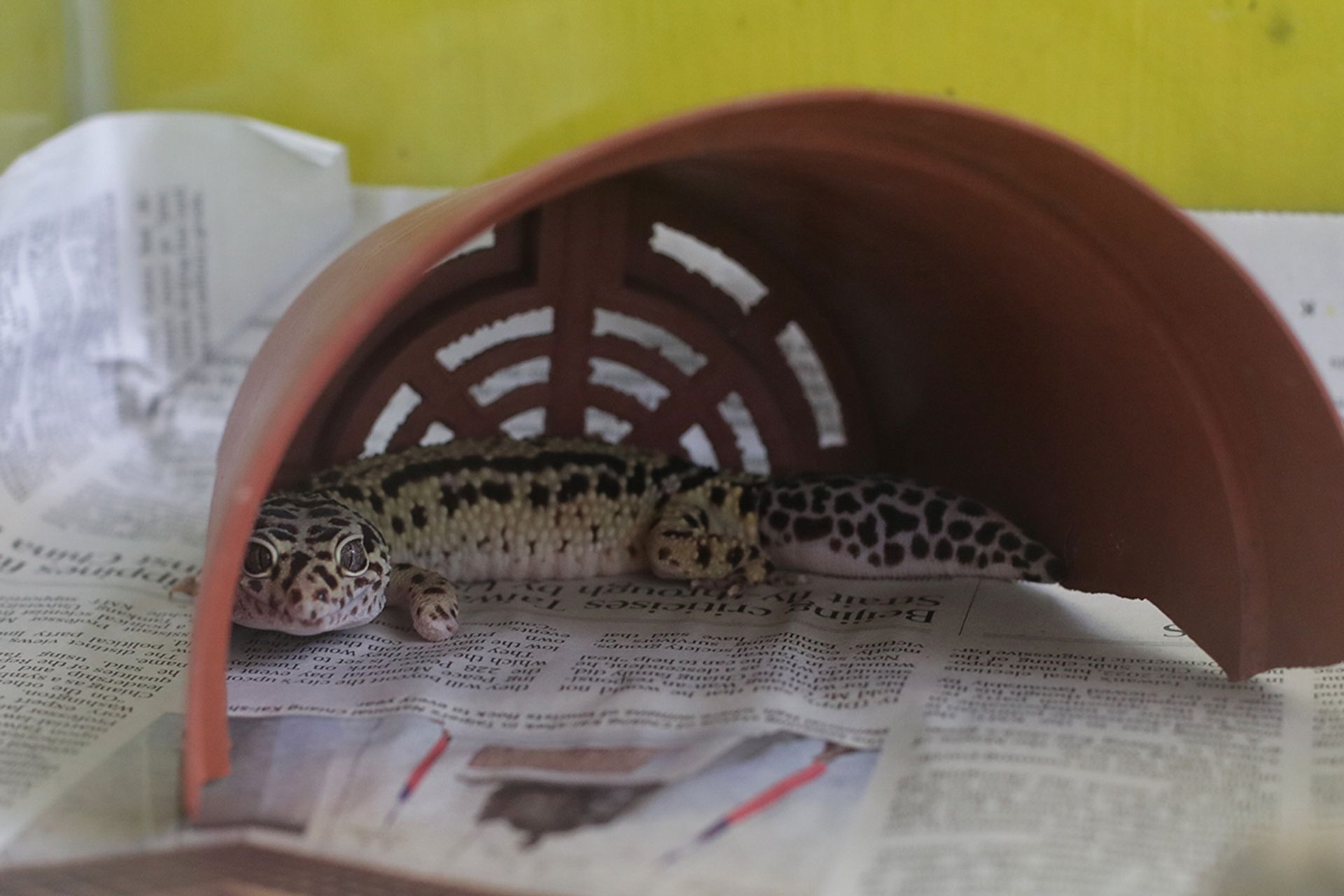
Leopard geckos are a popular beginner’s reptile in several countries, including Malaysia and the United States.
They are one of the most popular exotic pets in Singapore, and instances of their smuggling have come to light – with one gecko detected by ICA during scans of a package on Sept 20.
Ms Anbarasi said the gecko at Acres, which has not been named, will live out its life out there.
“No one would want them back. Also, they don’t belong in the wild if they are bred in captivity to a certain morph.” A morph is a colour or pattern mutation arising from selective breeding.
Most of these leopard geckos die even though they are rescued because they are “often bred in appalling conditions or smuggled in tiny containers”.